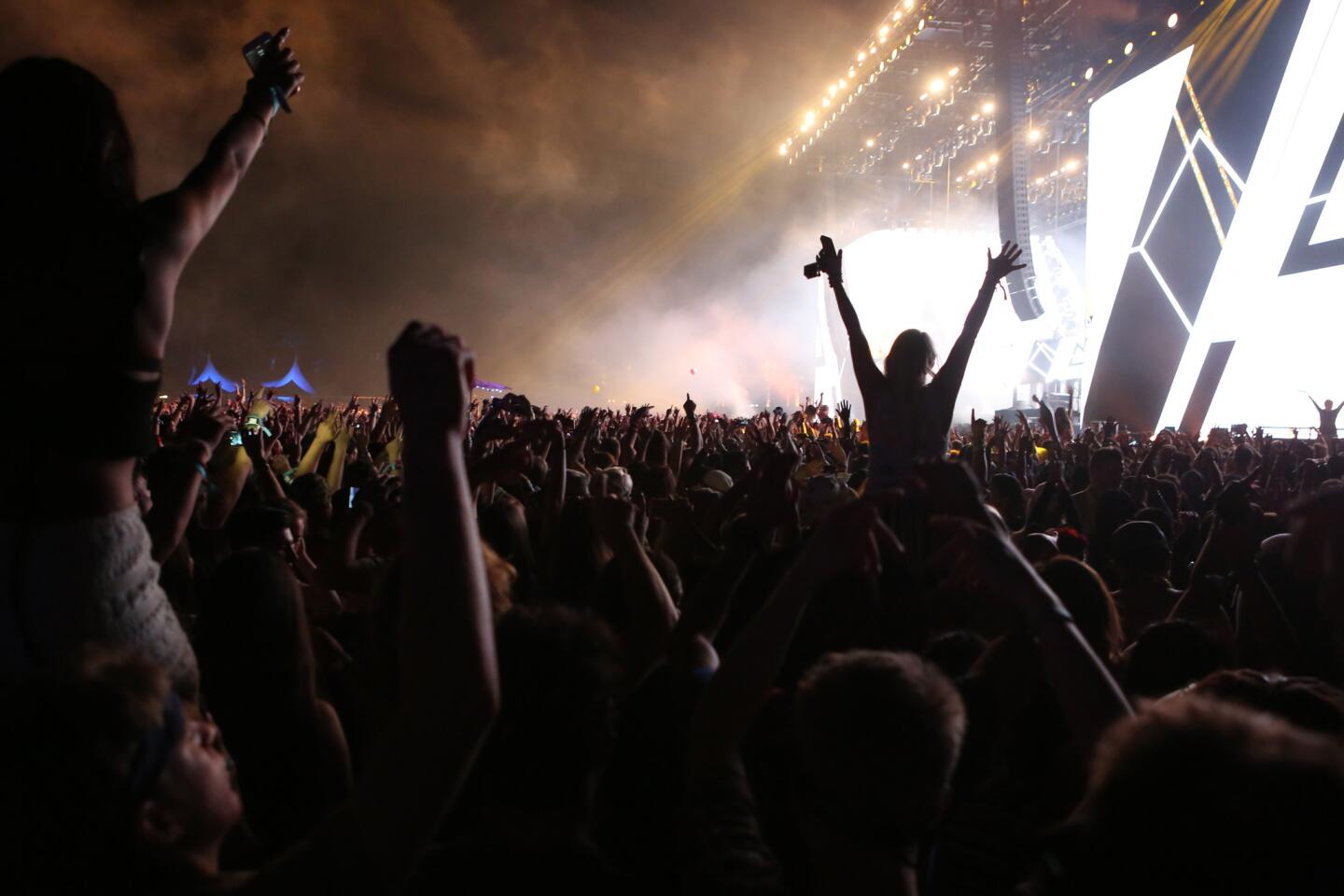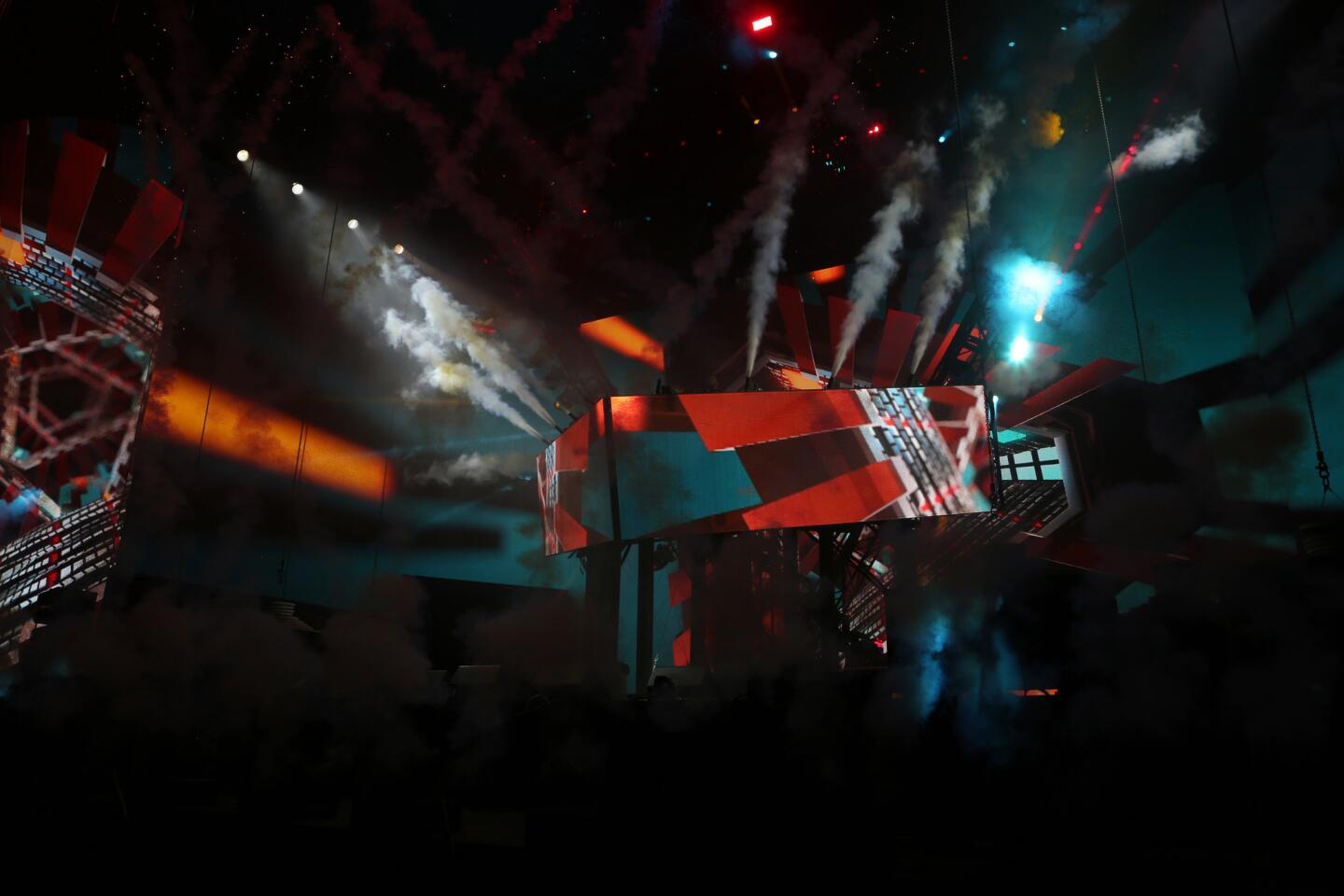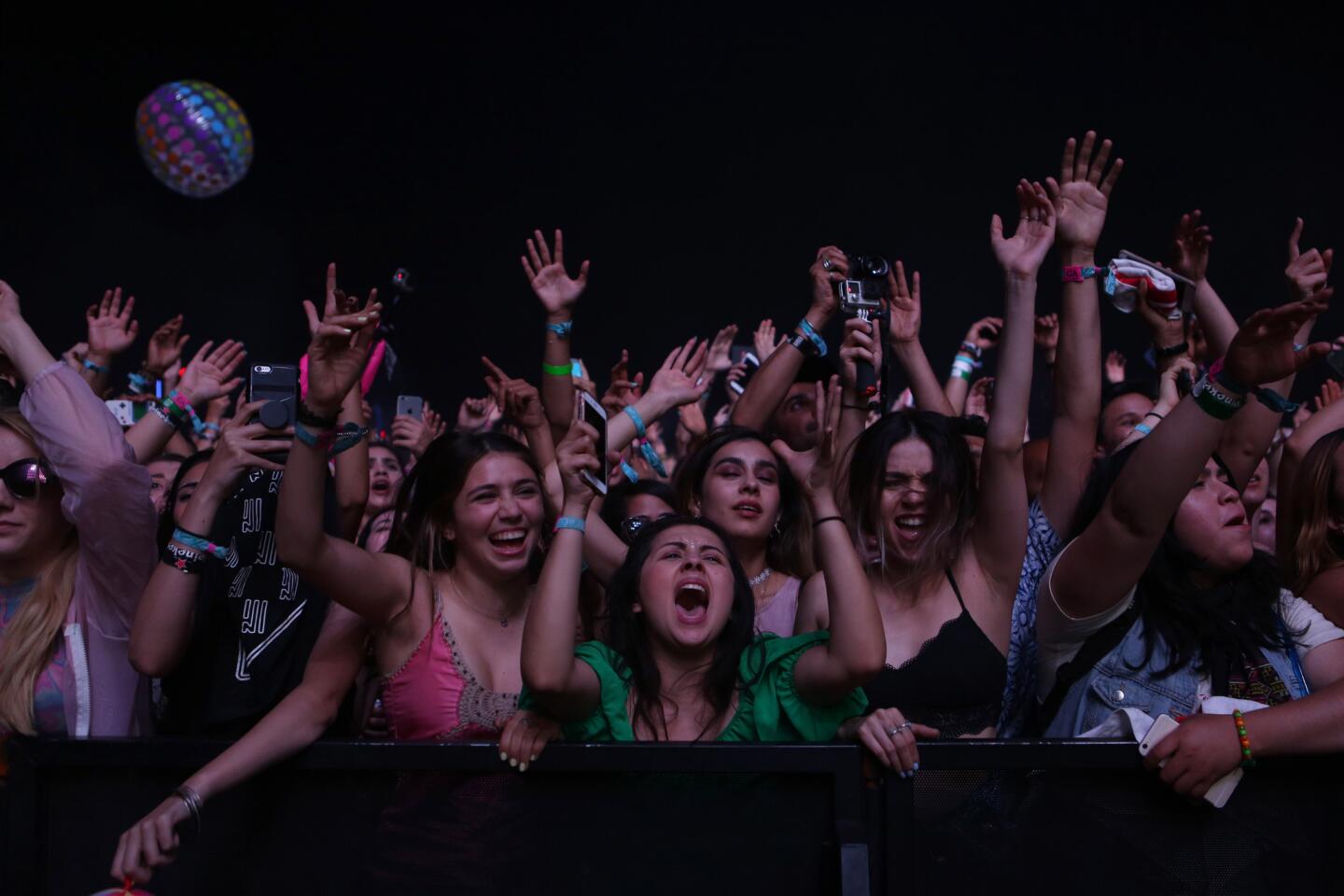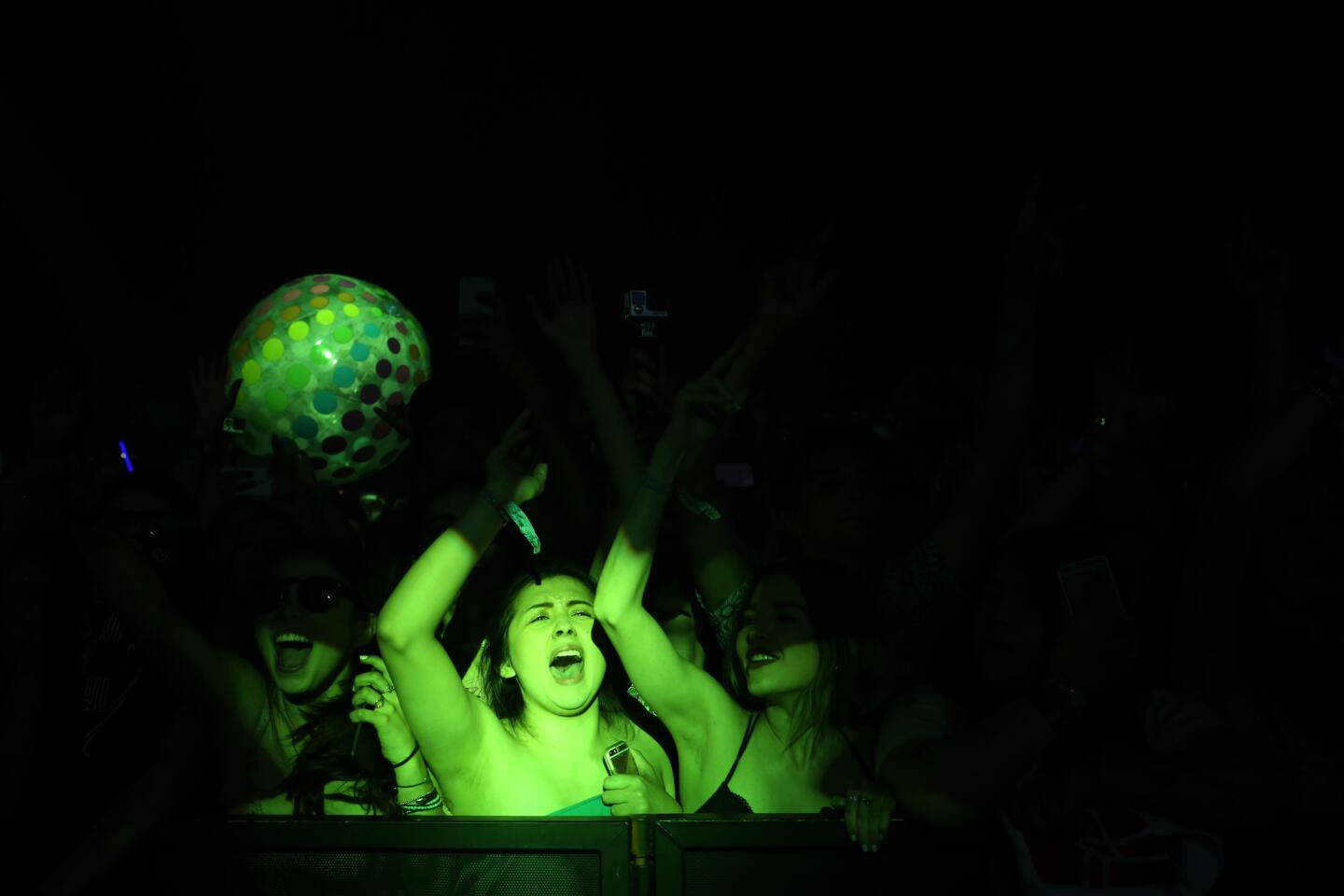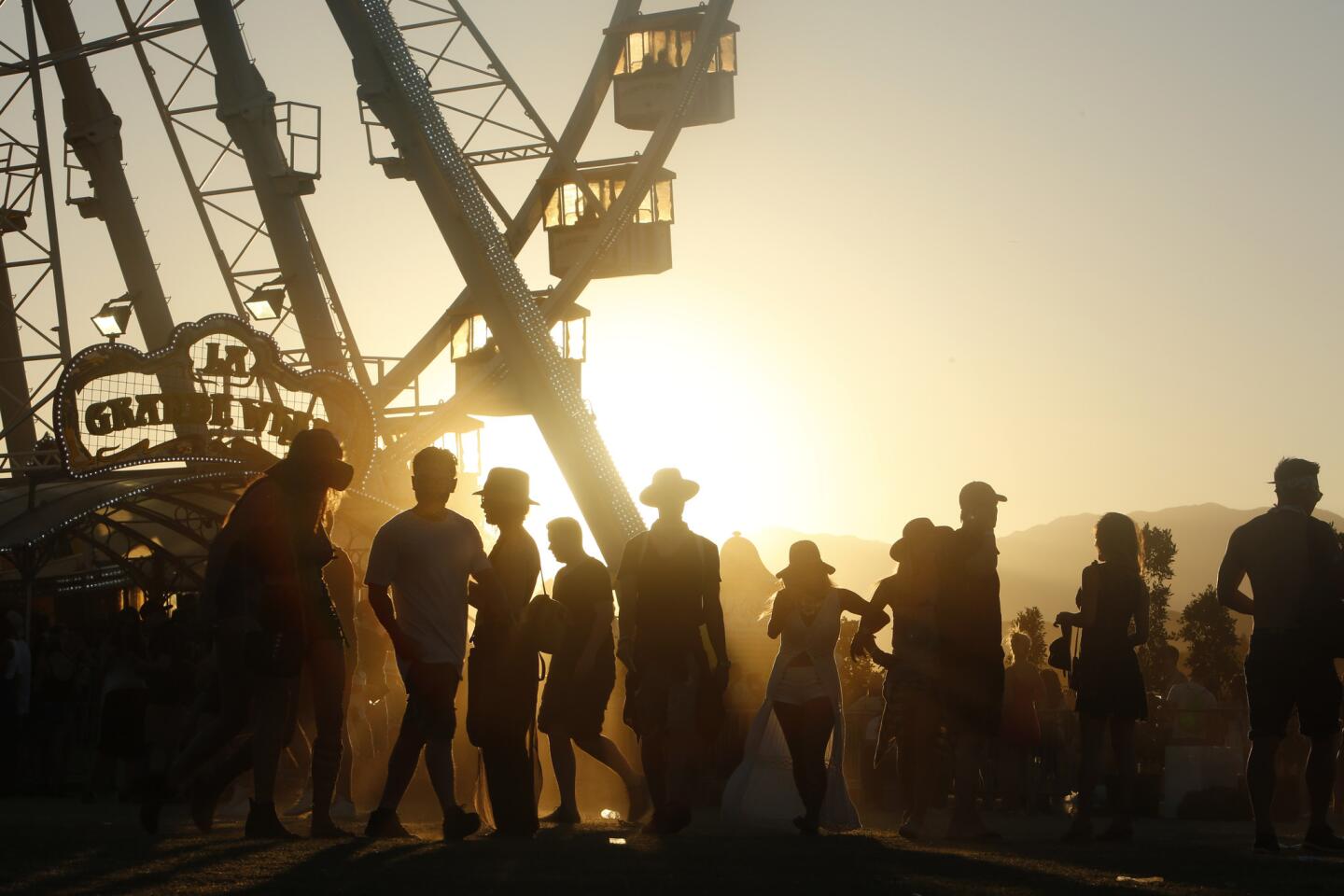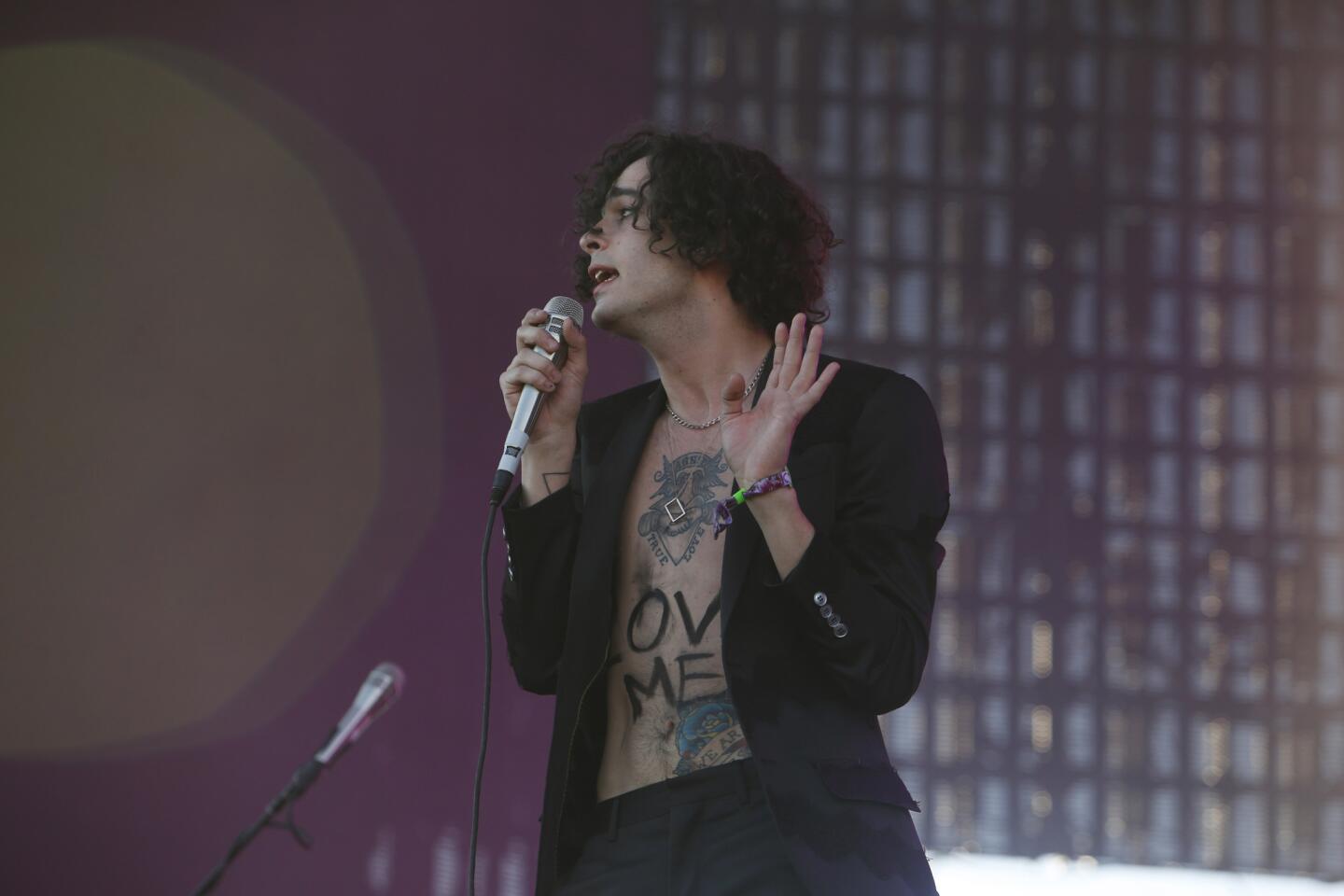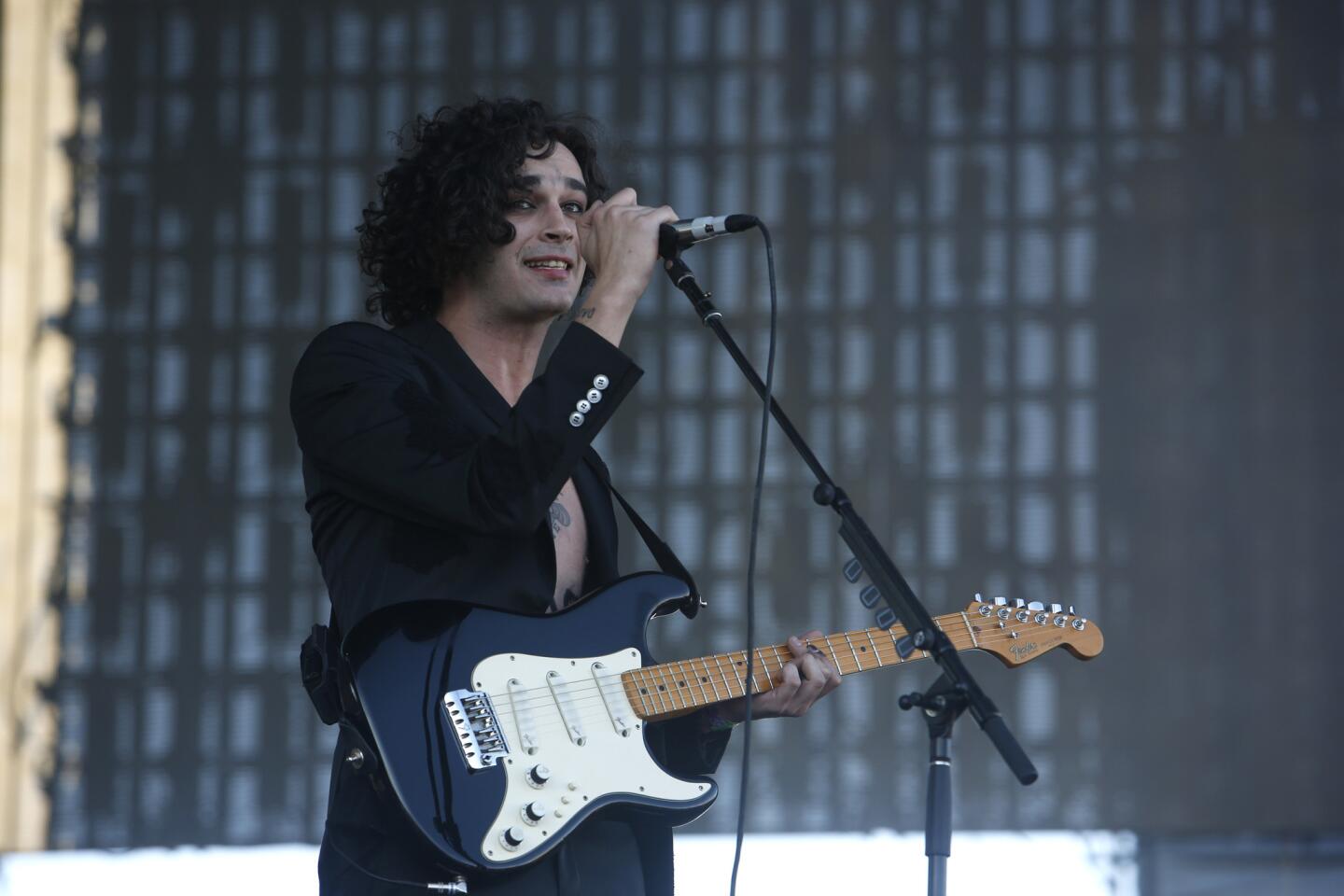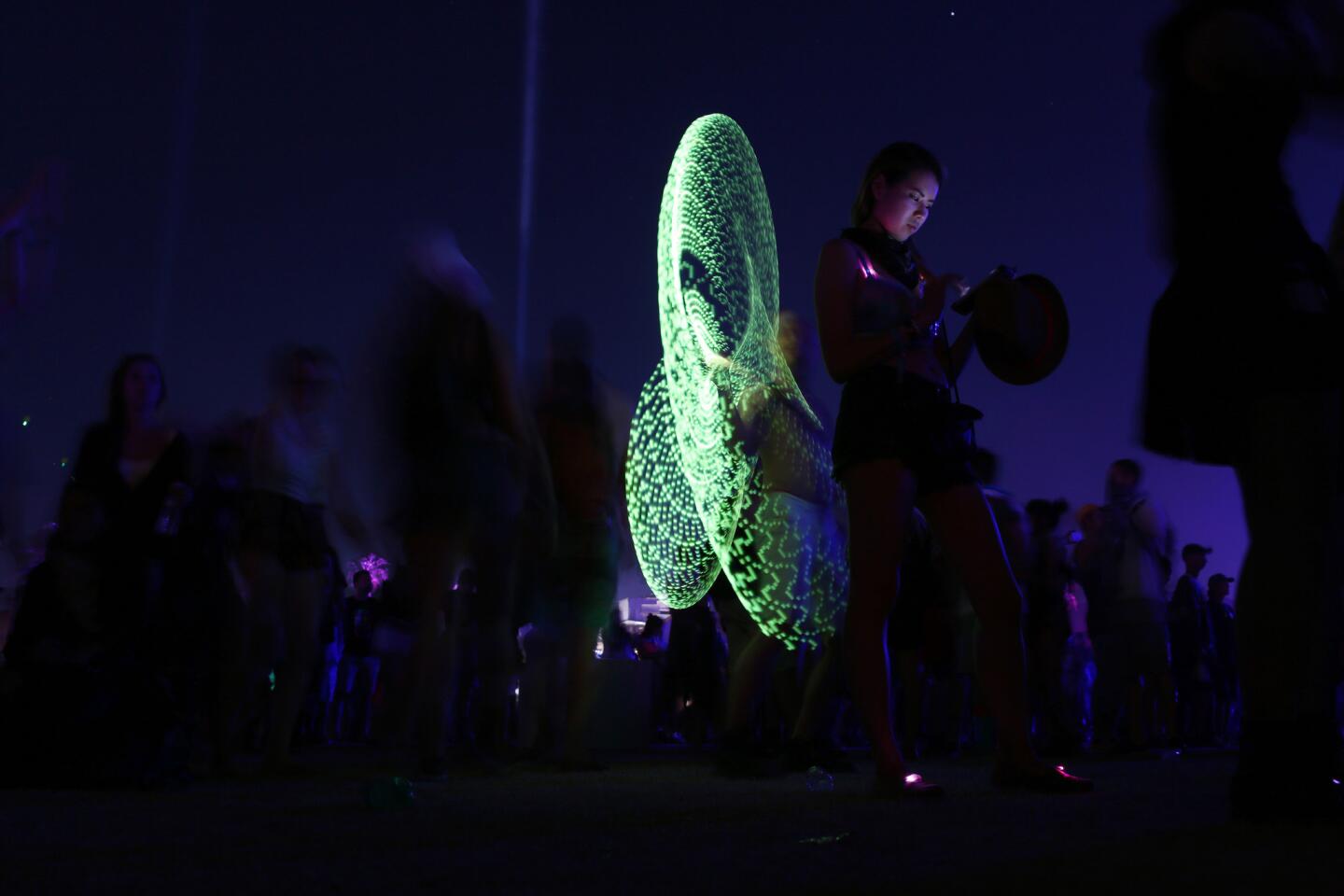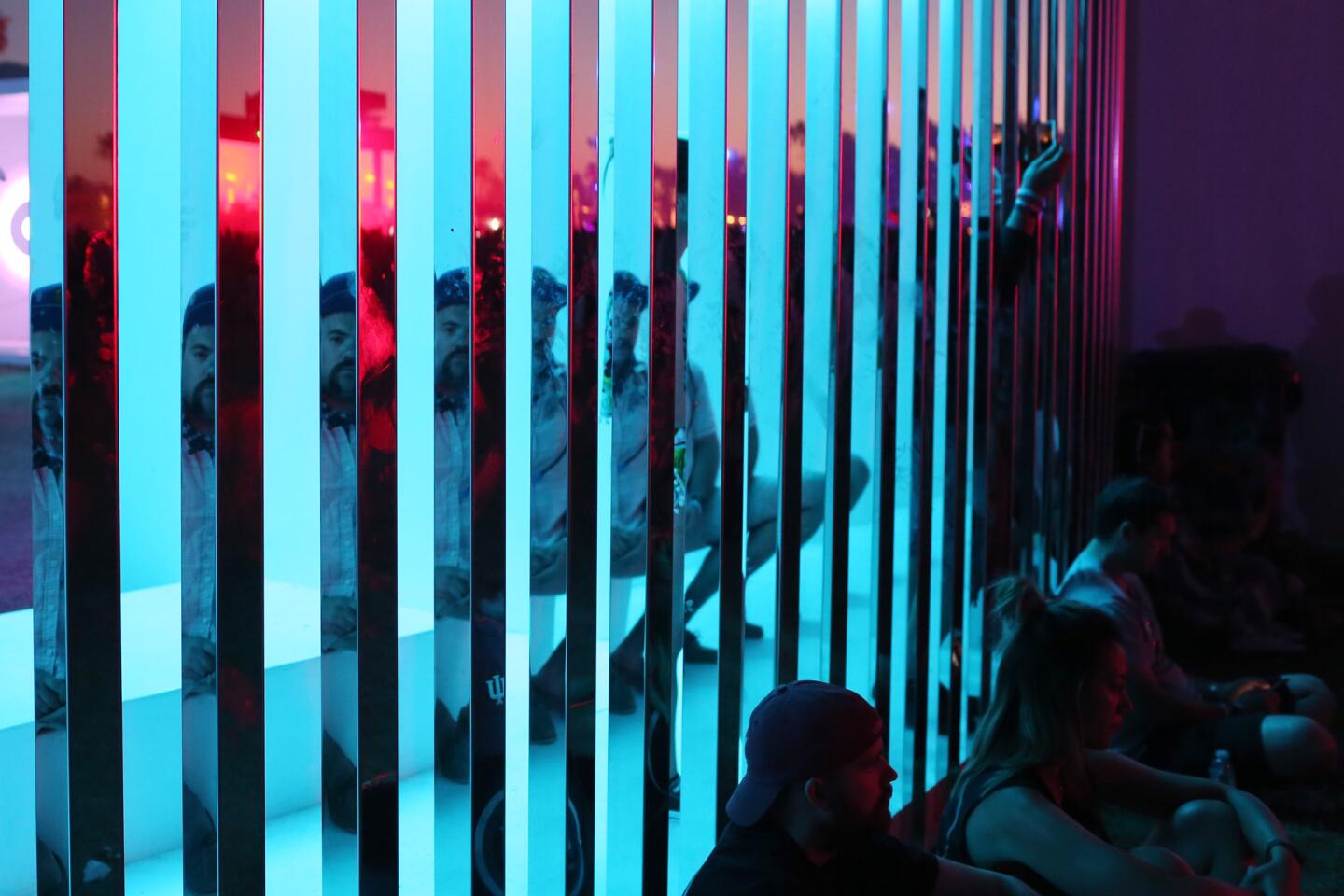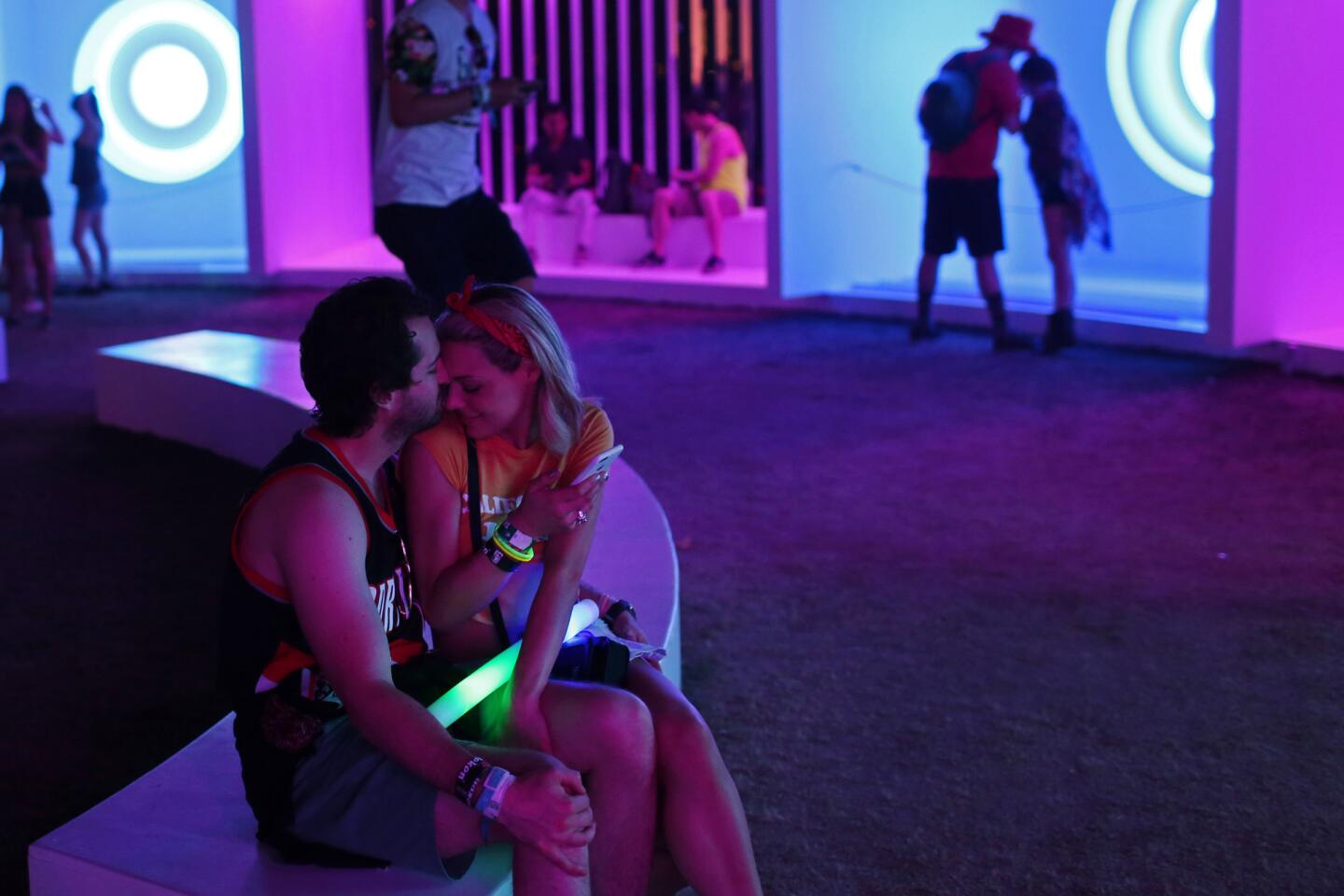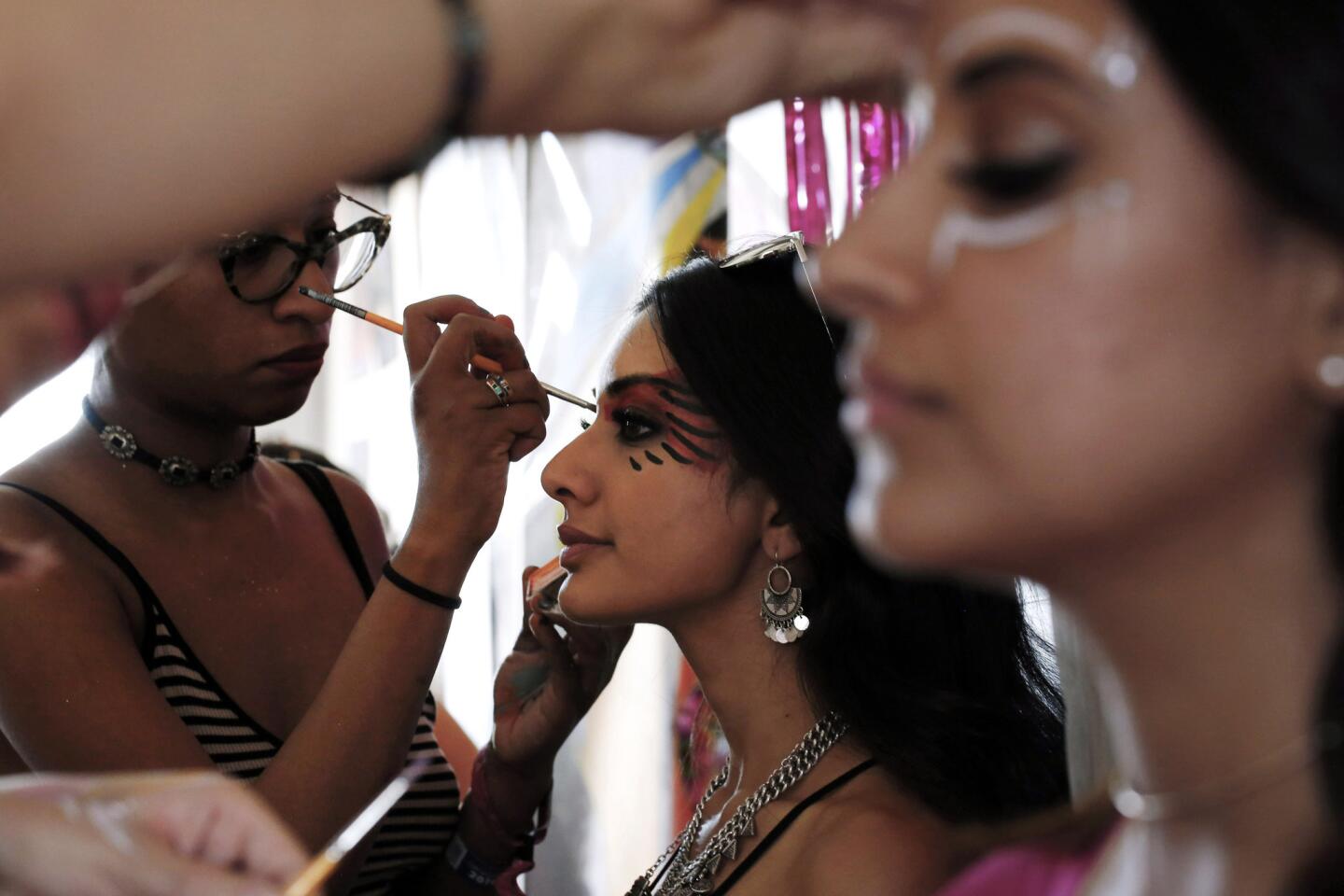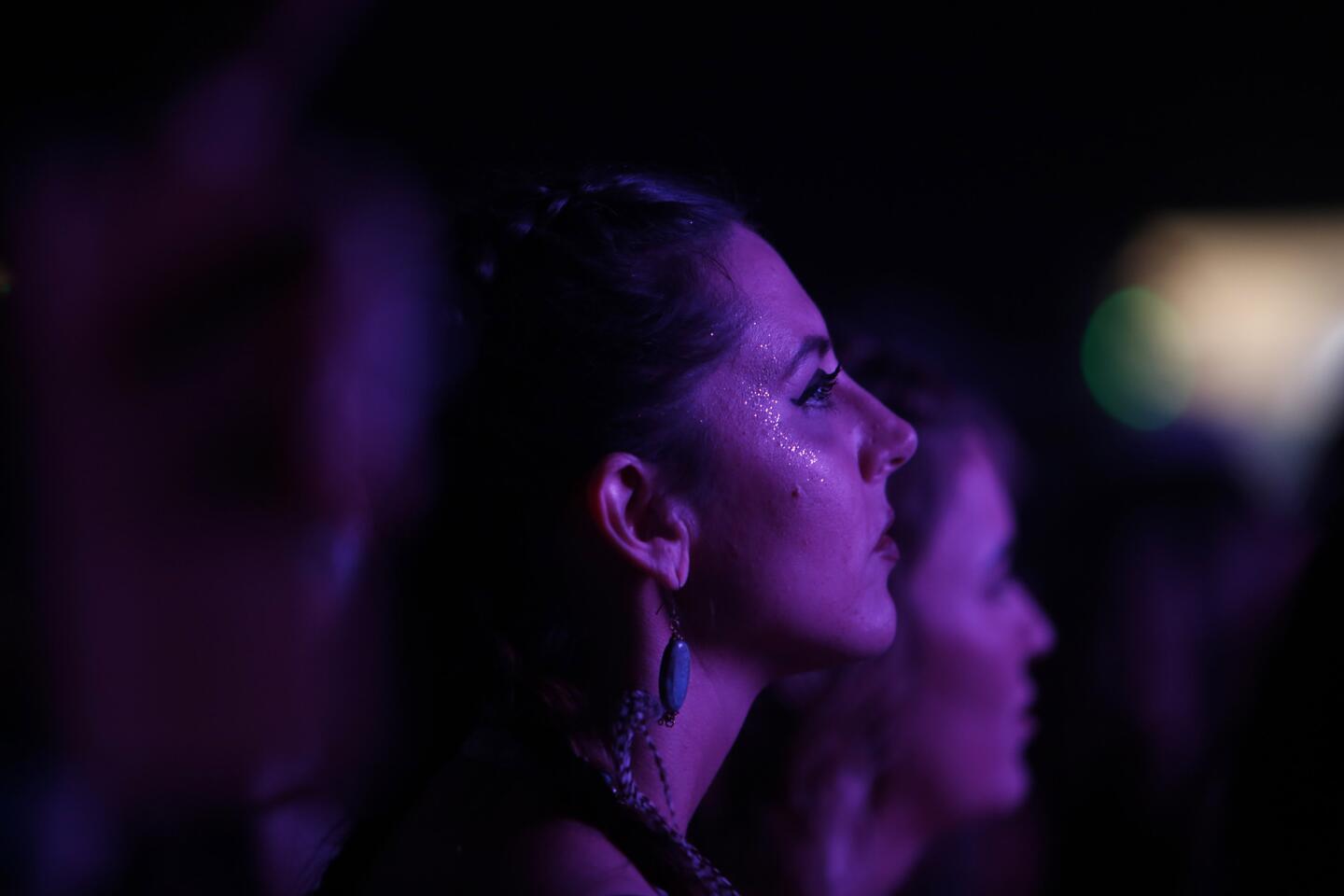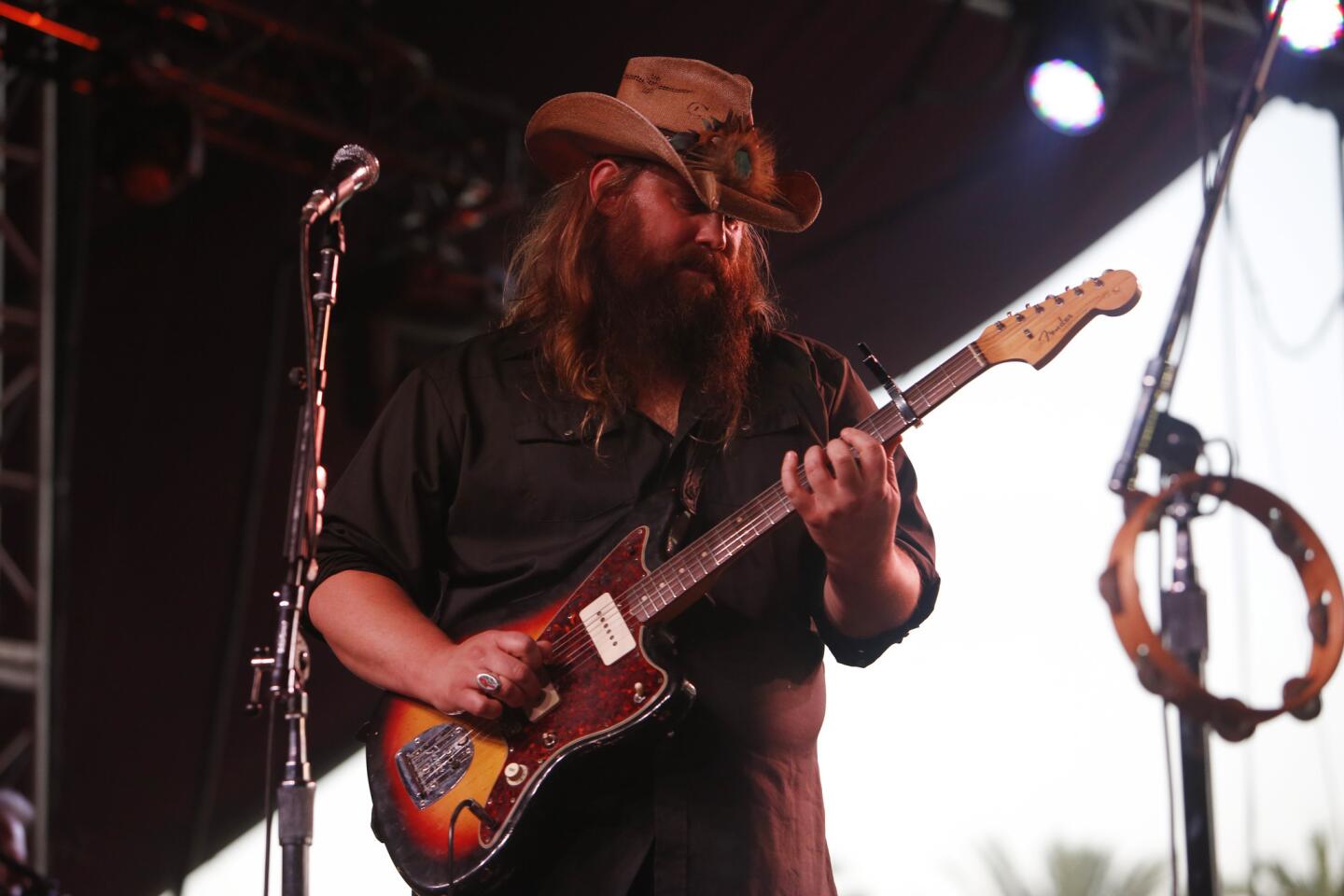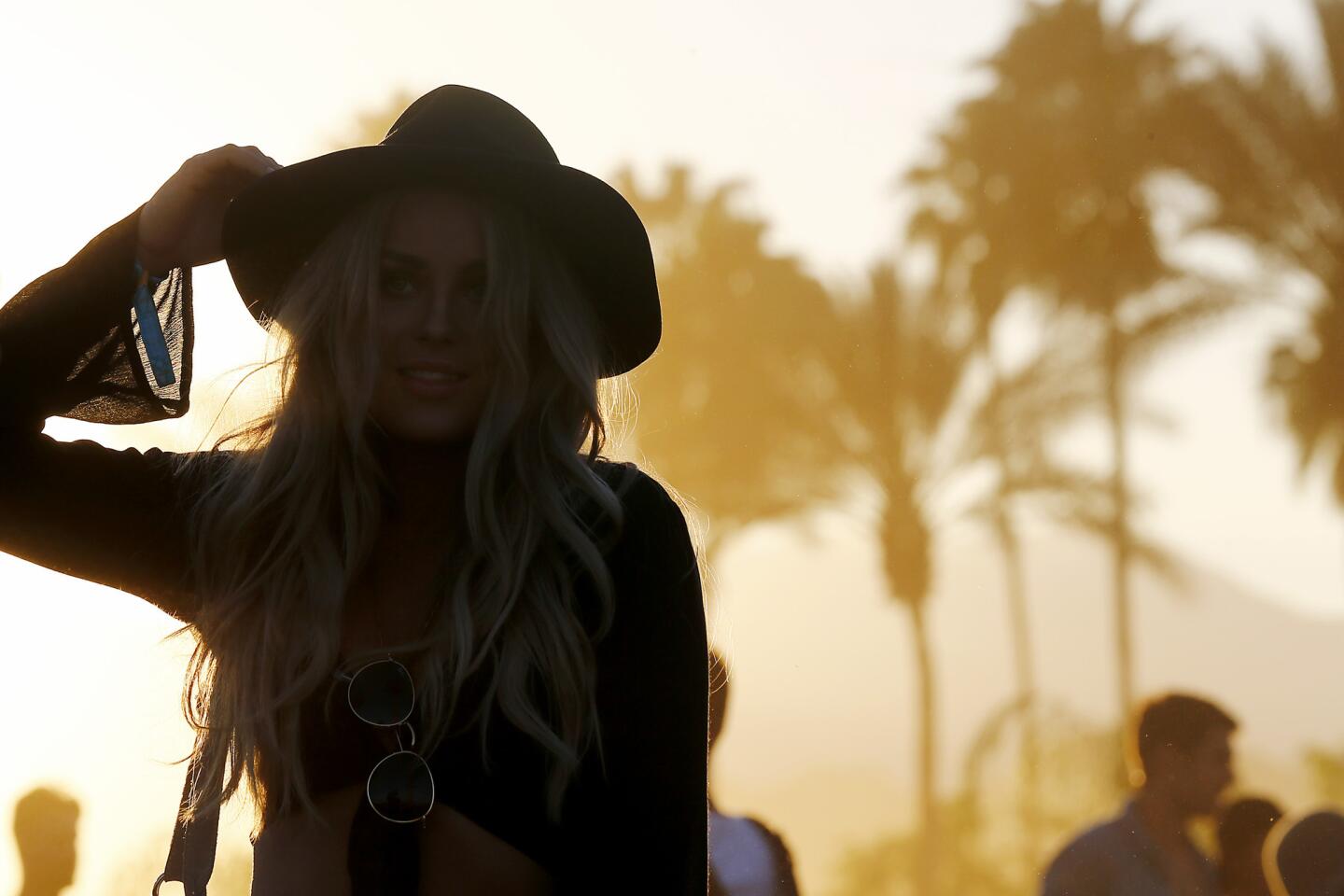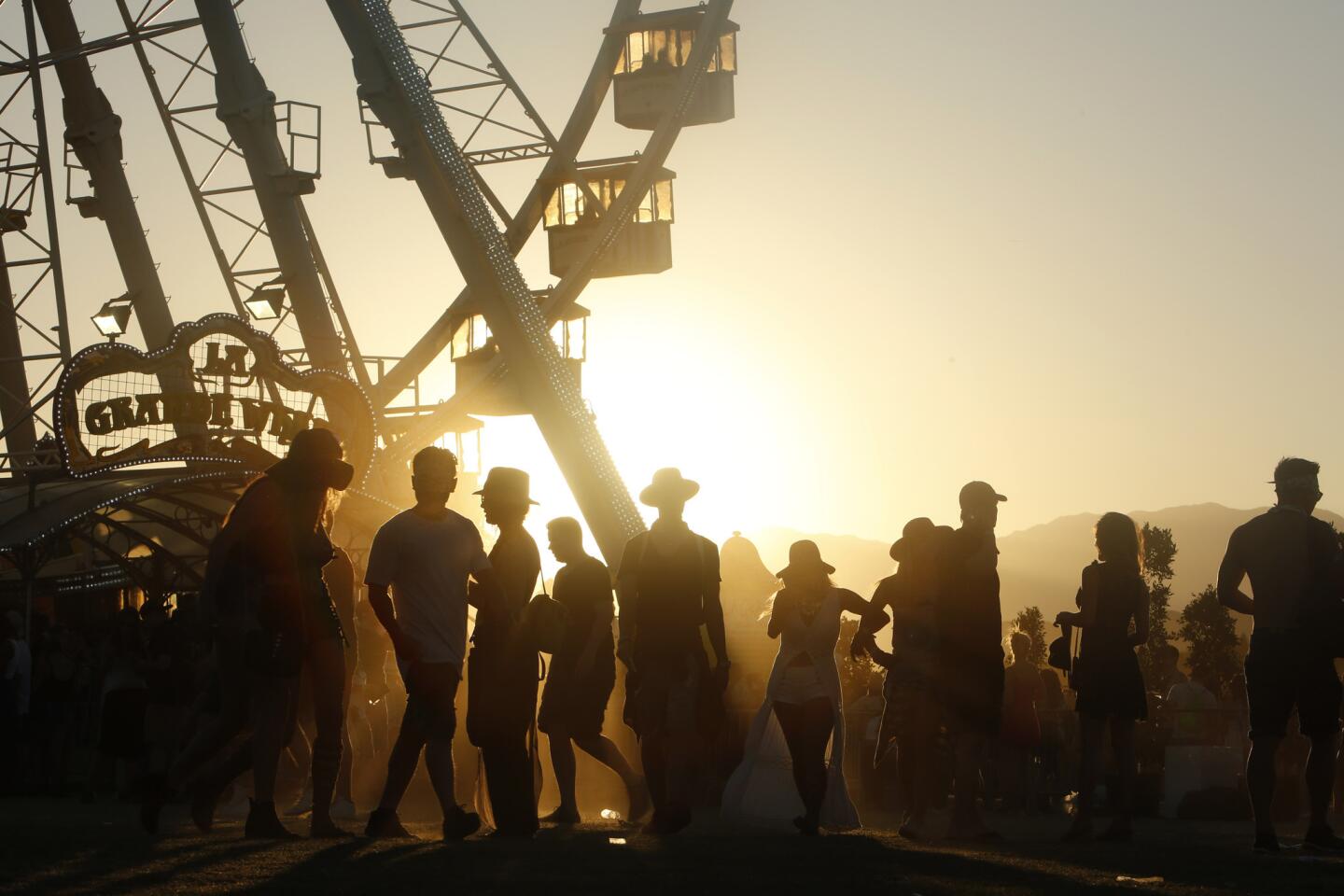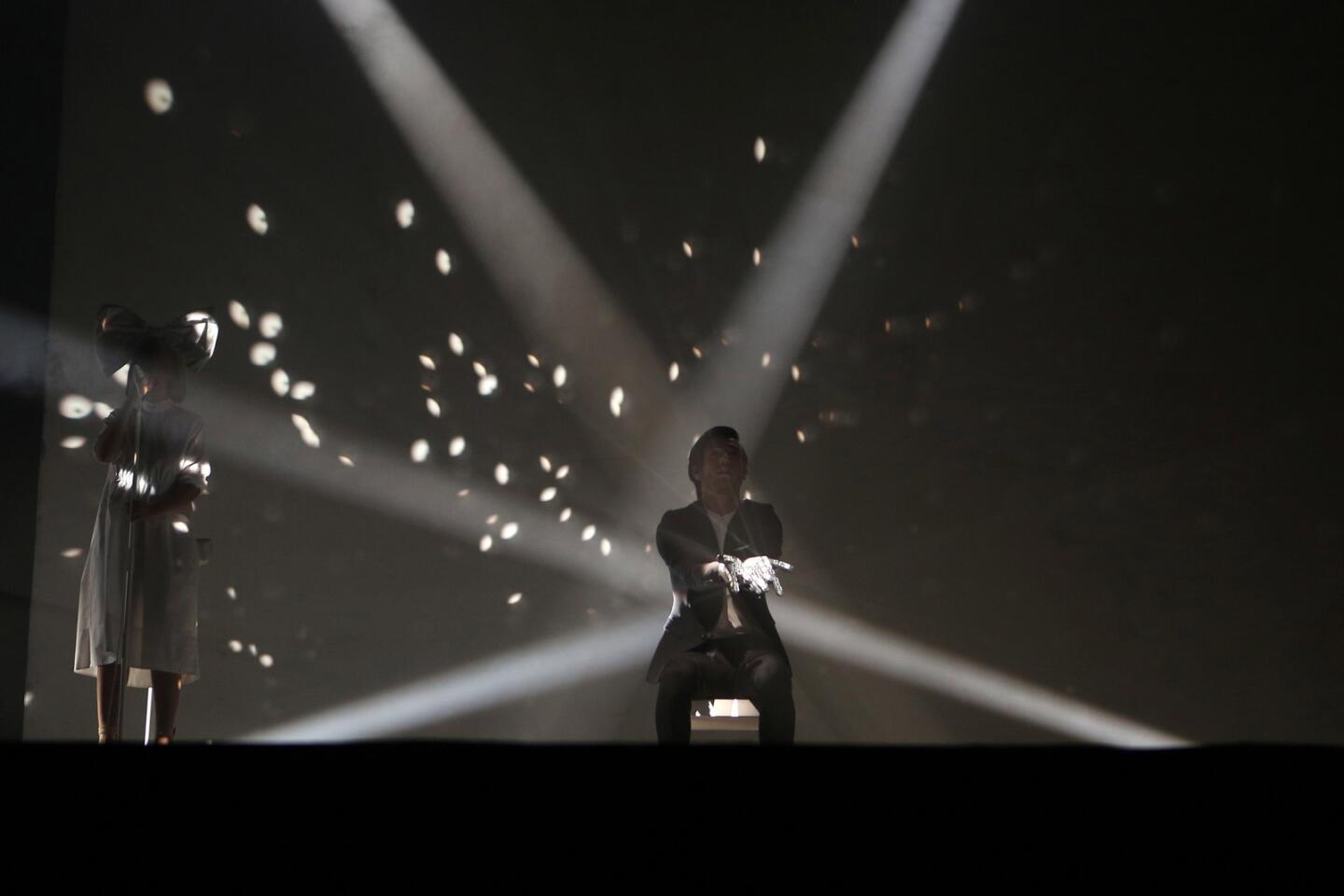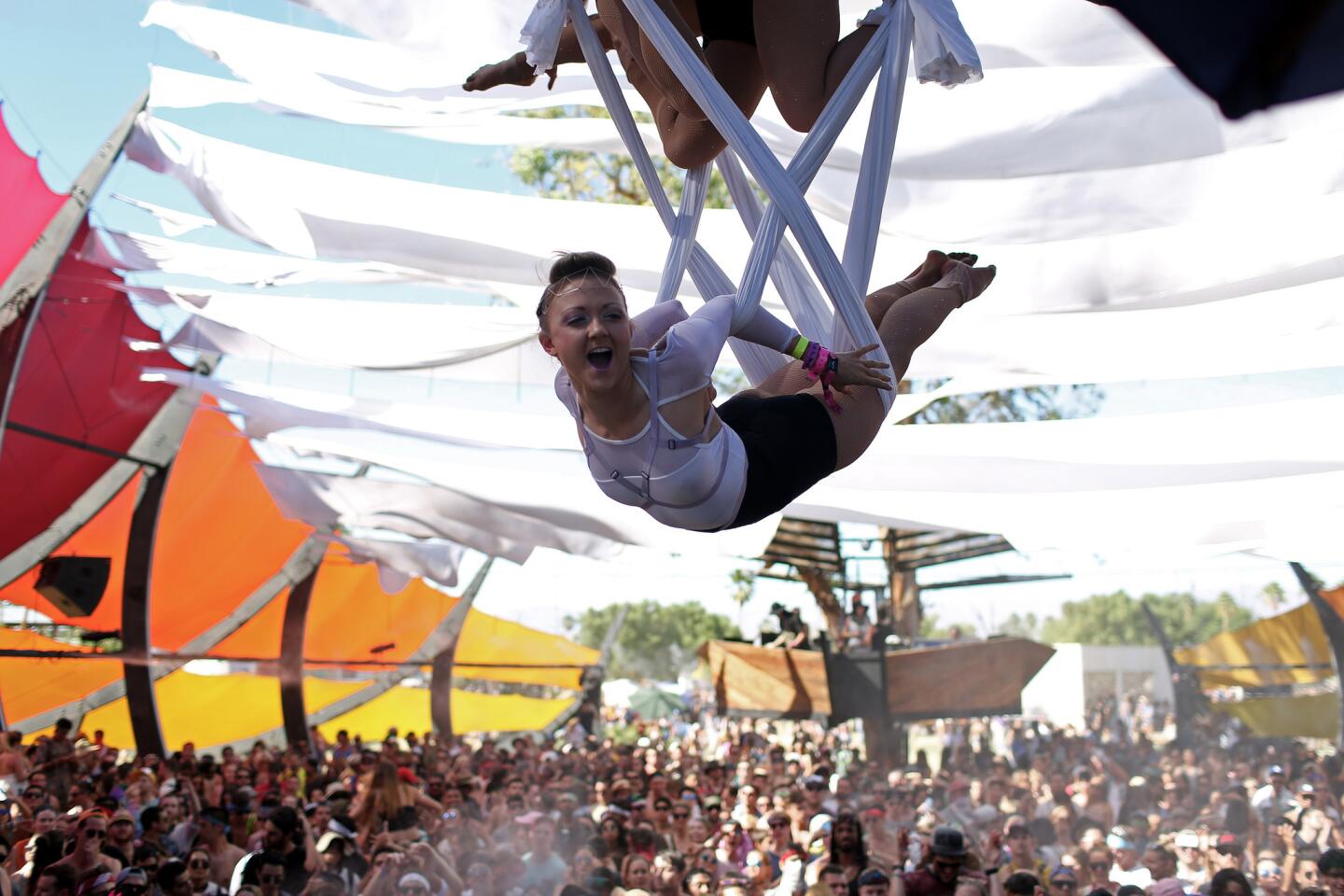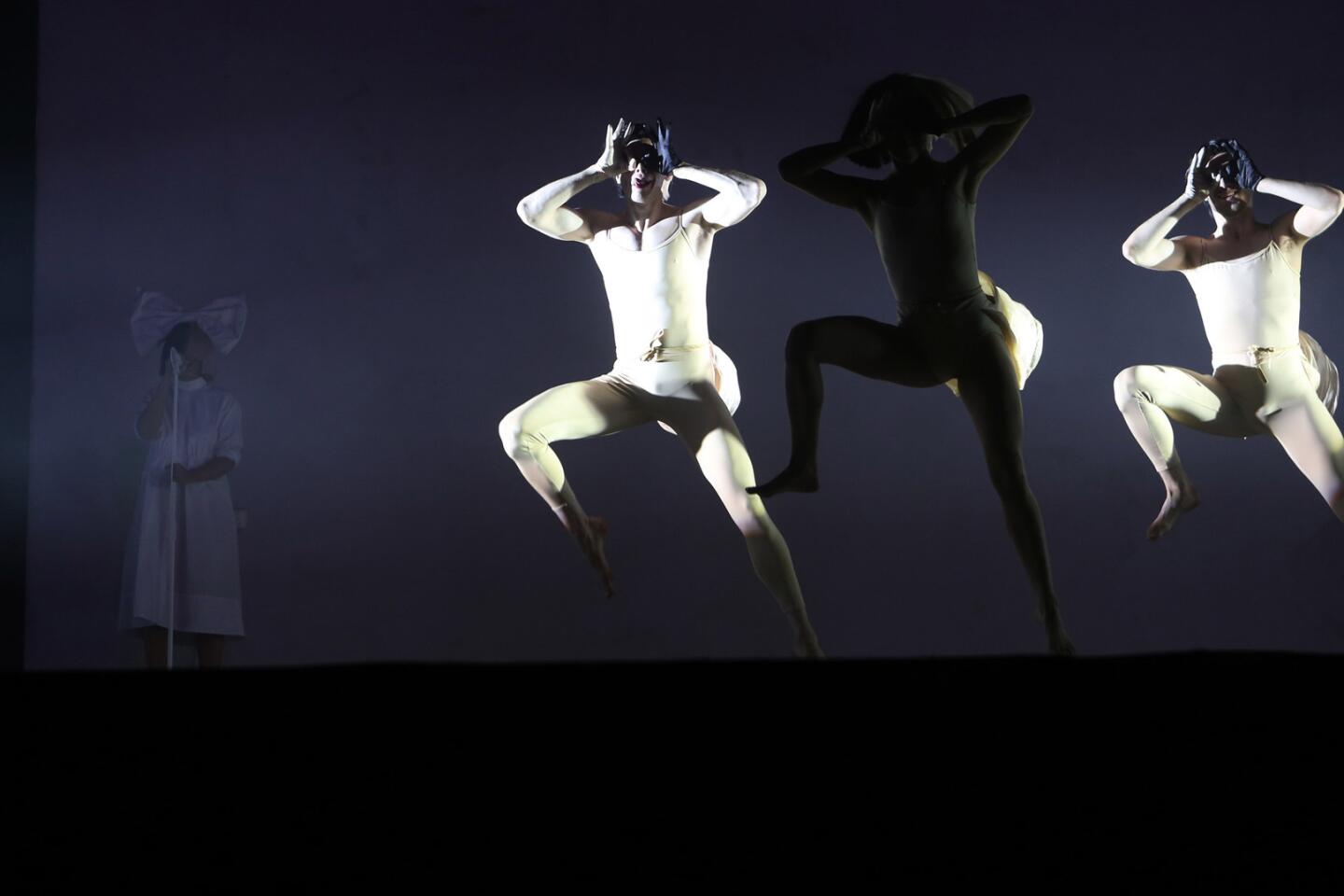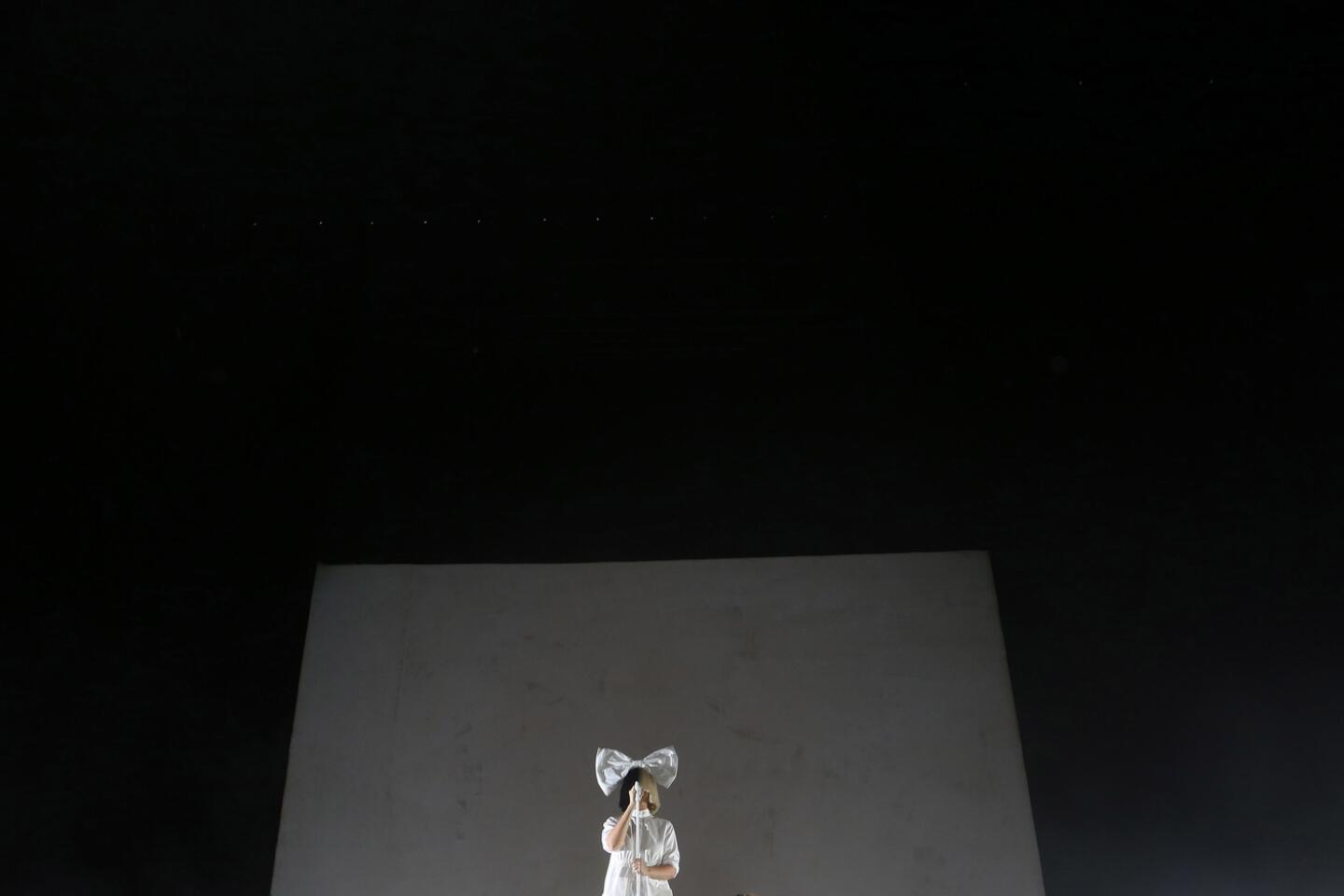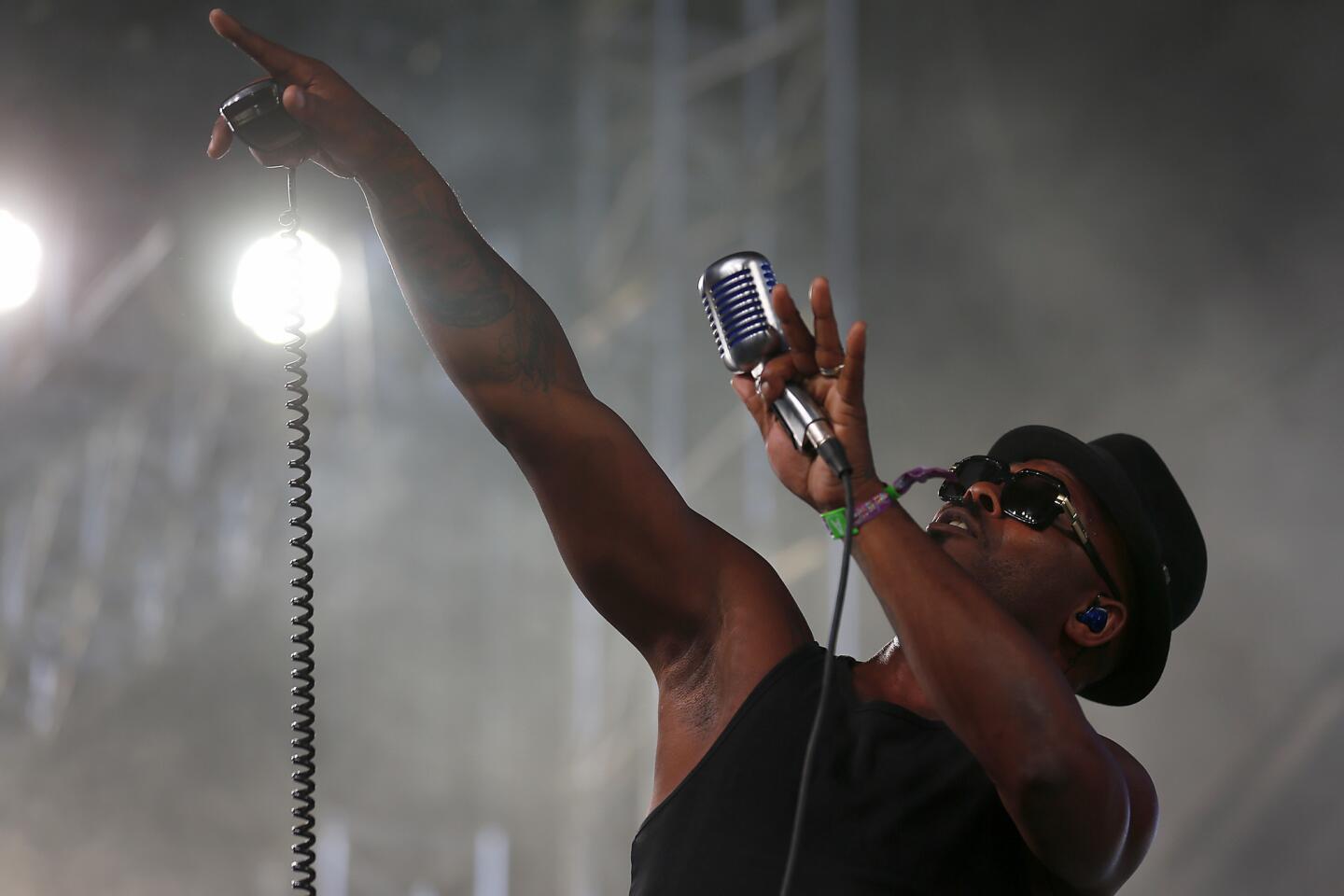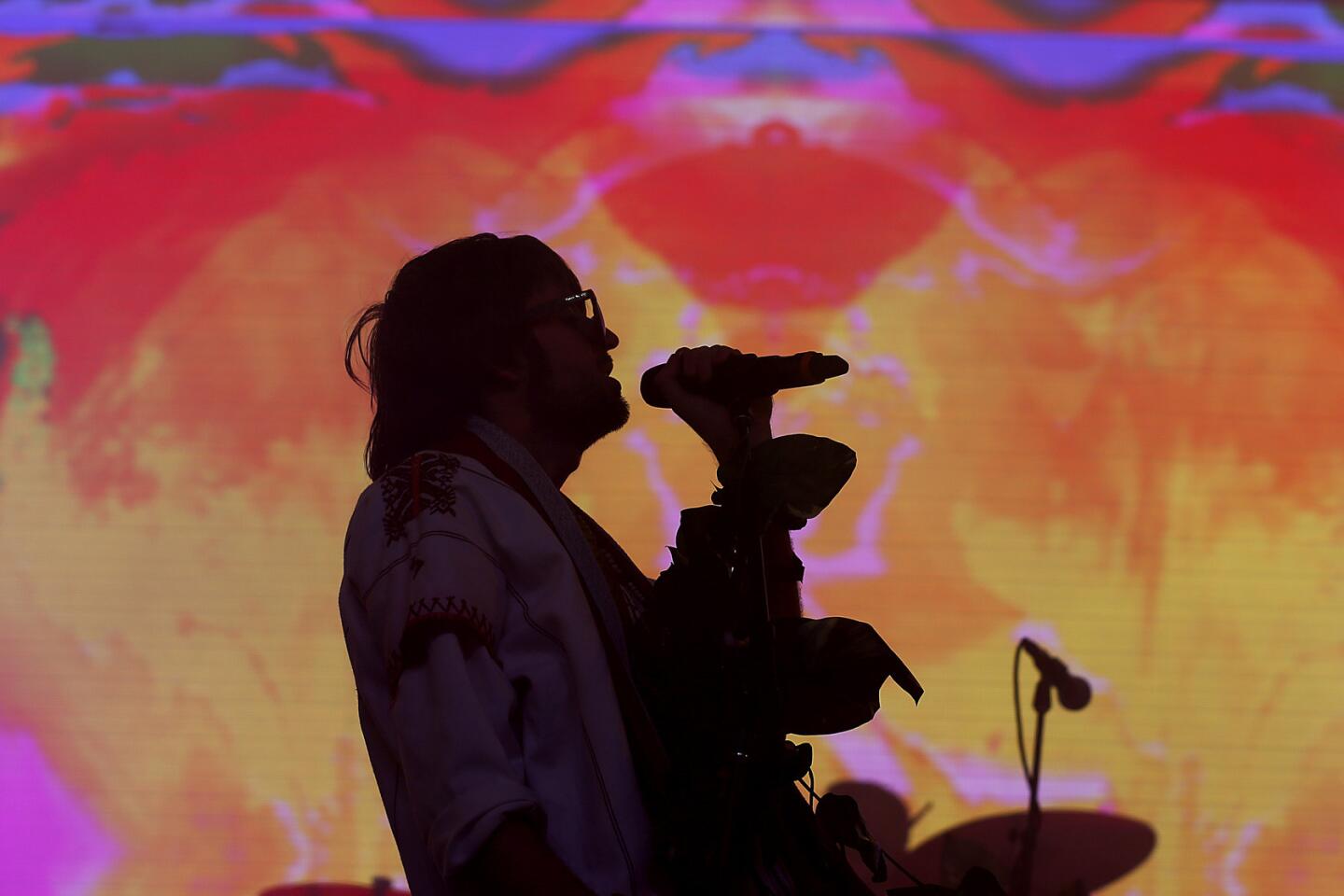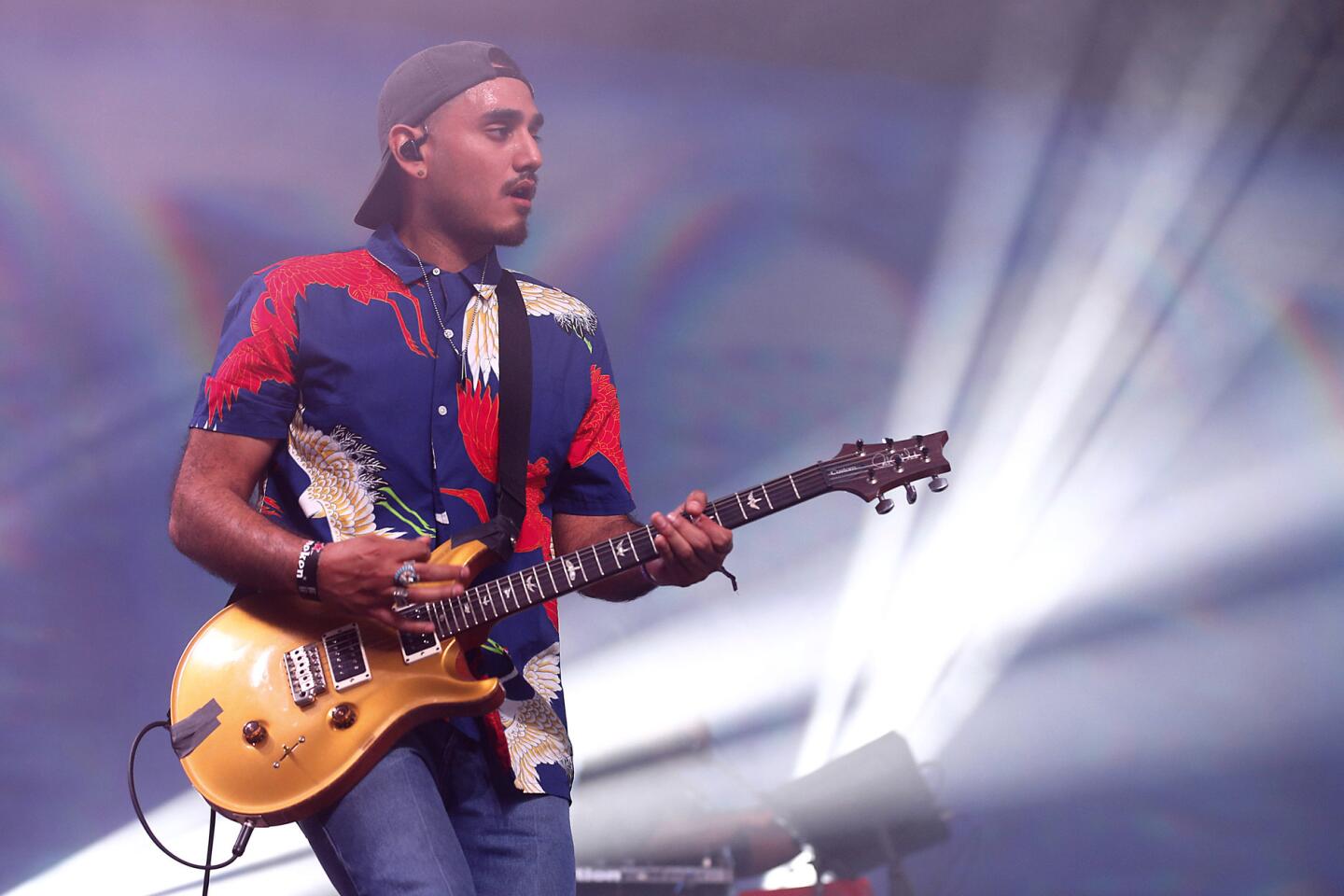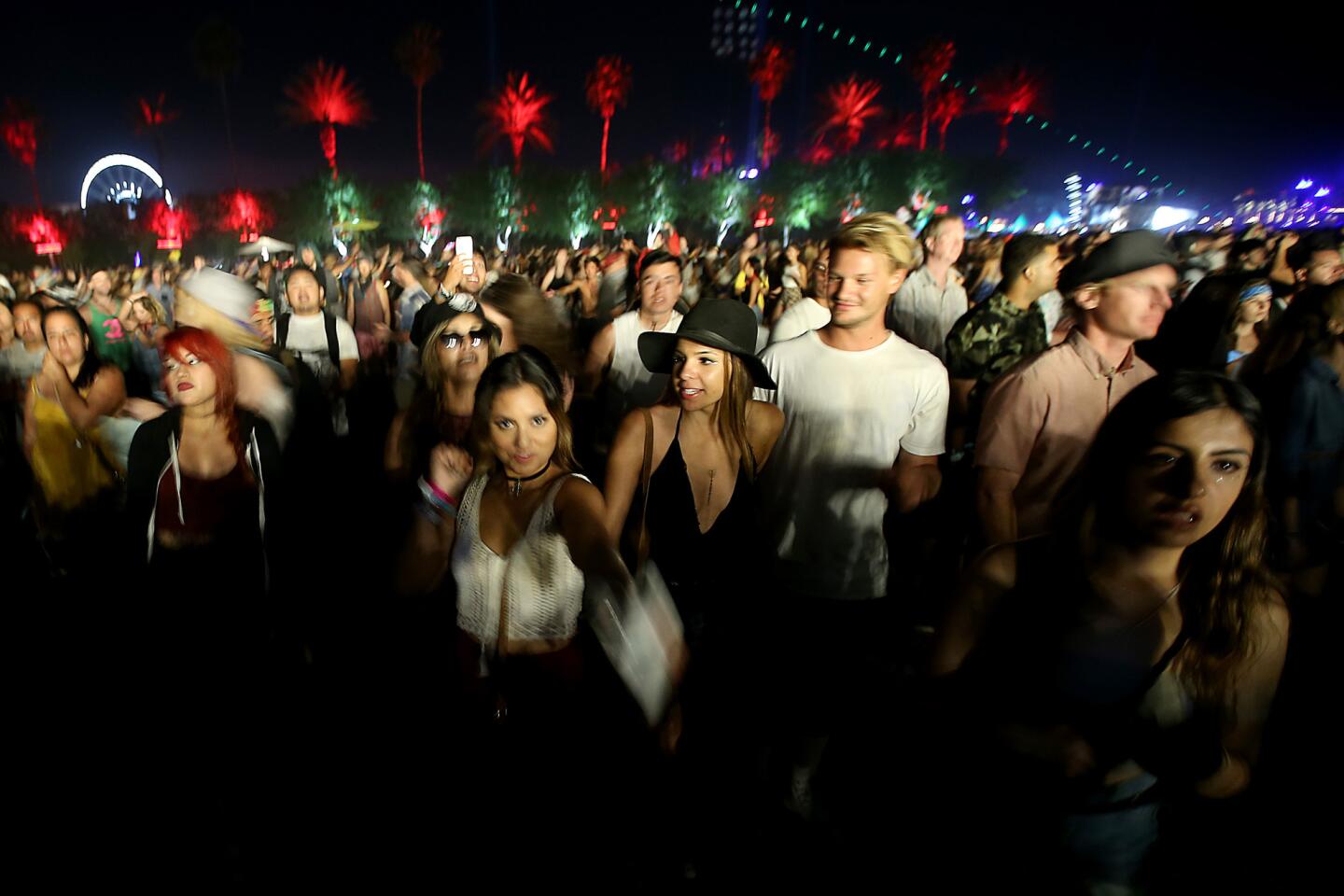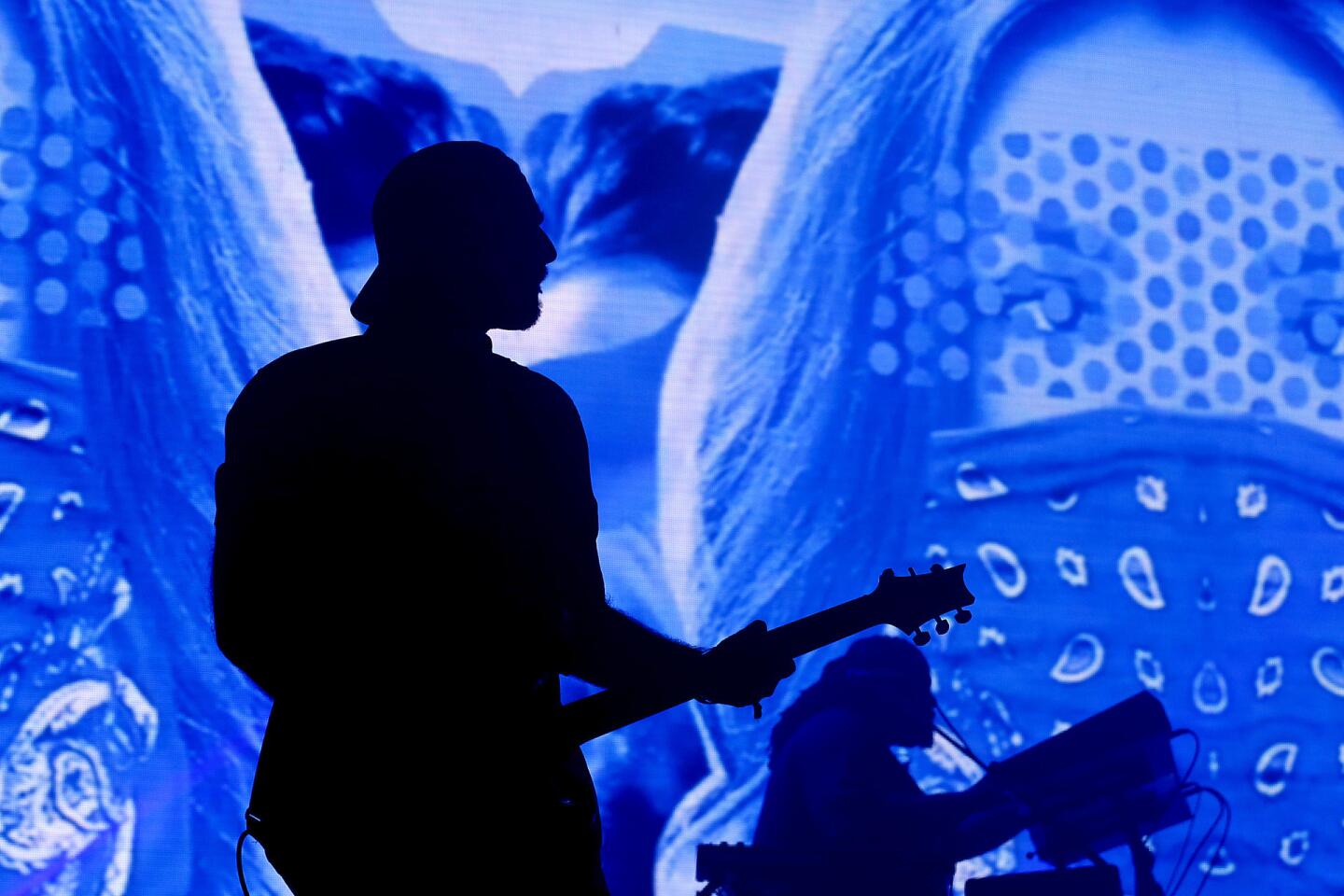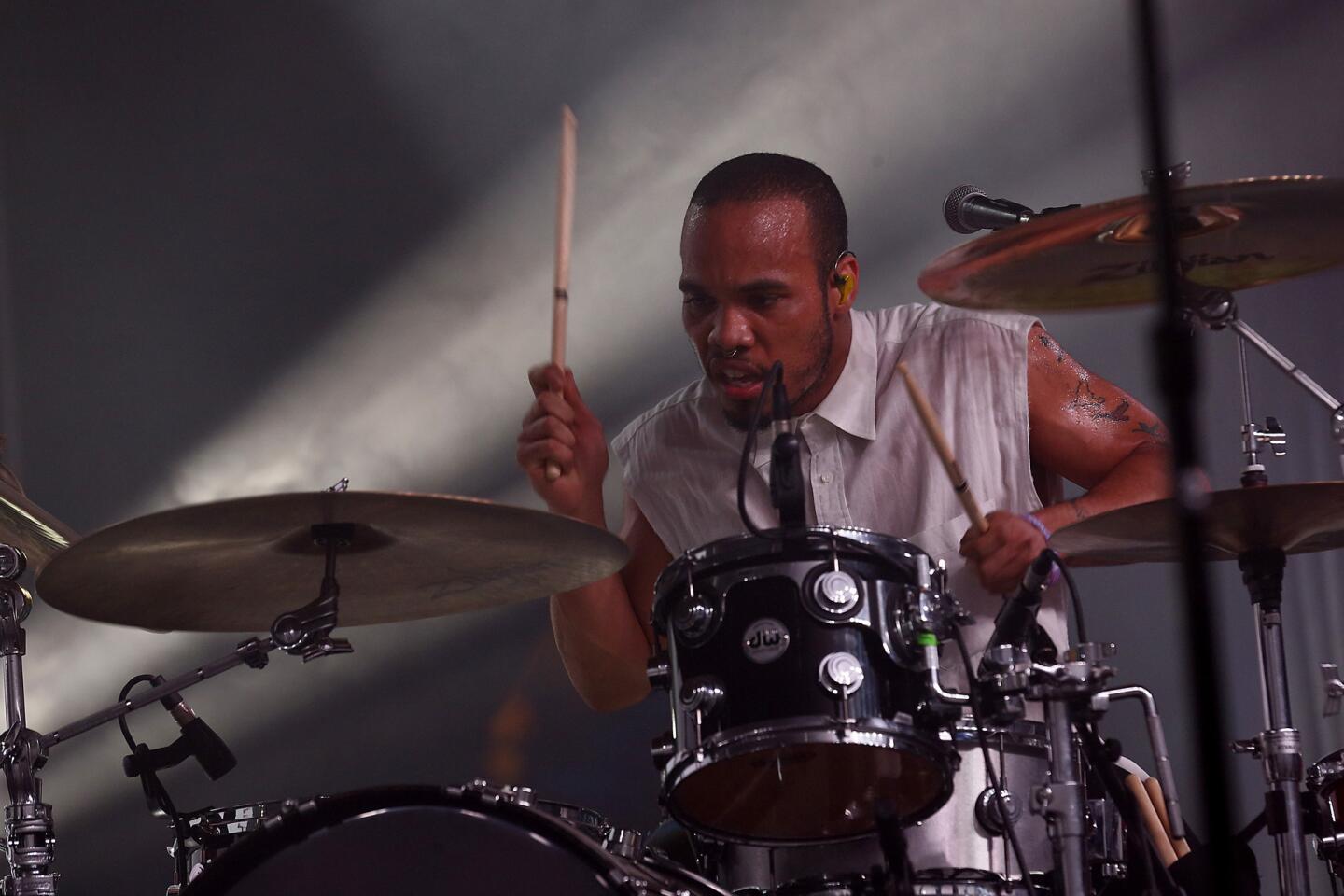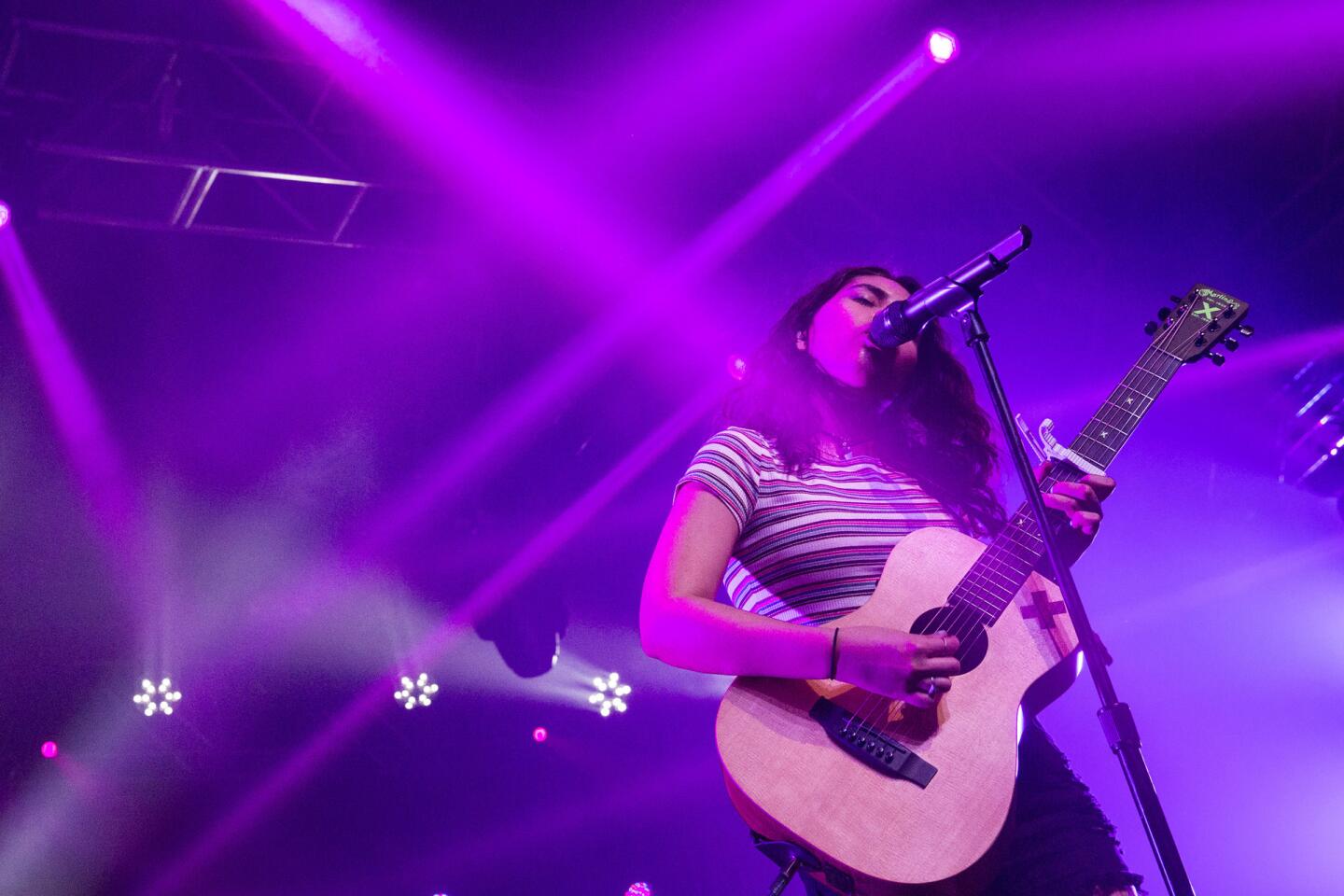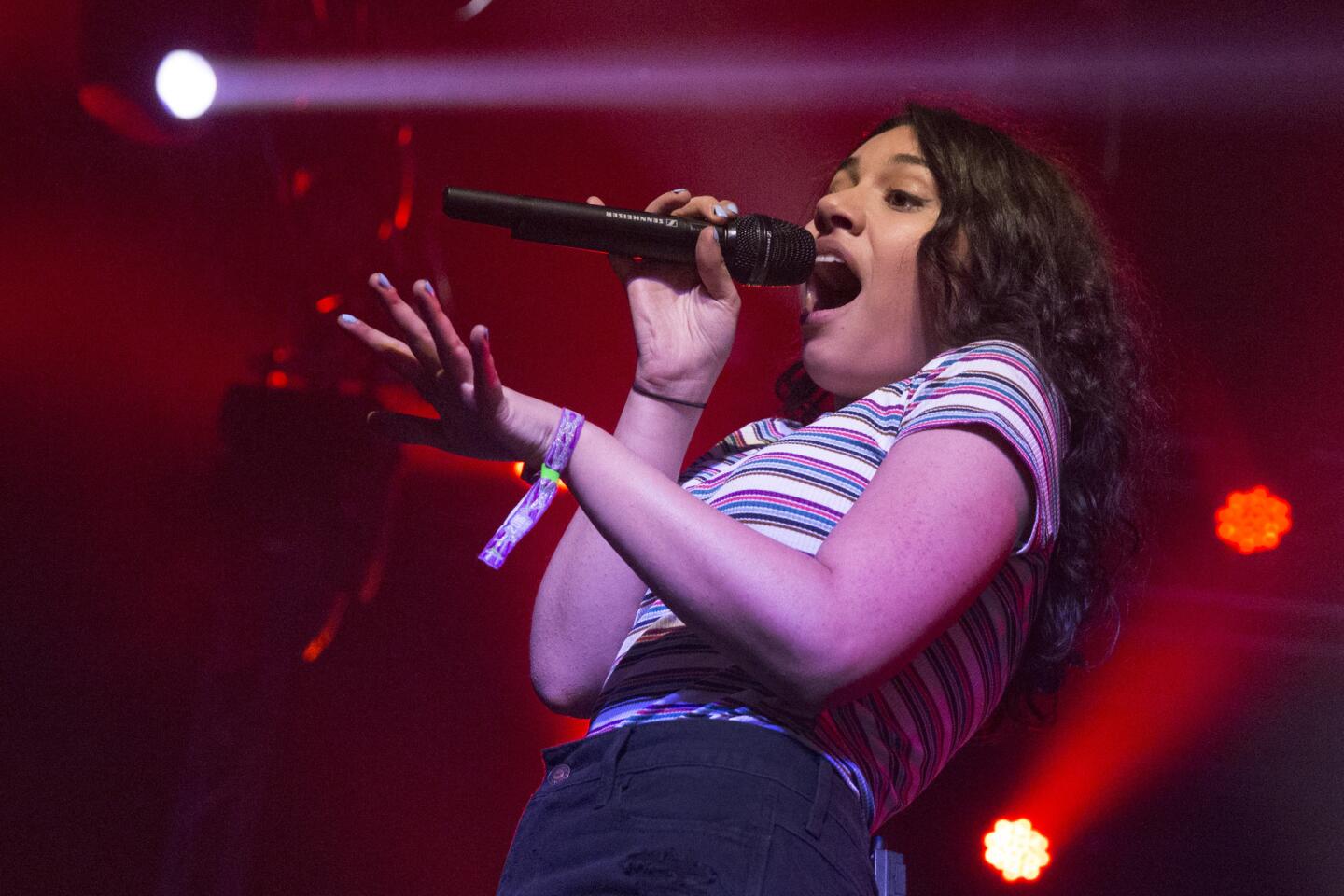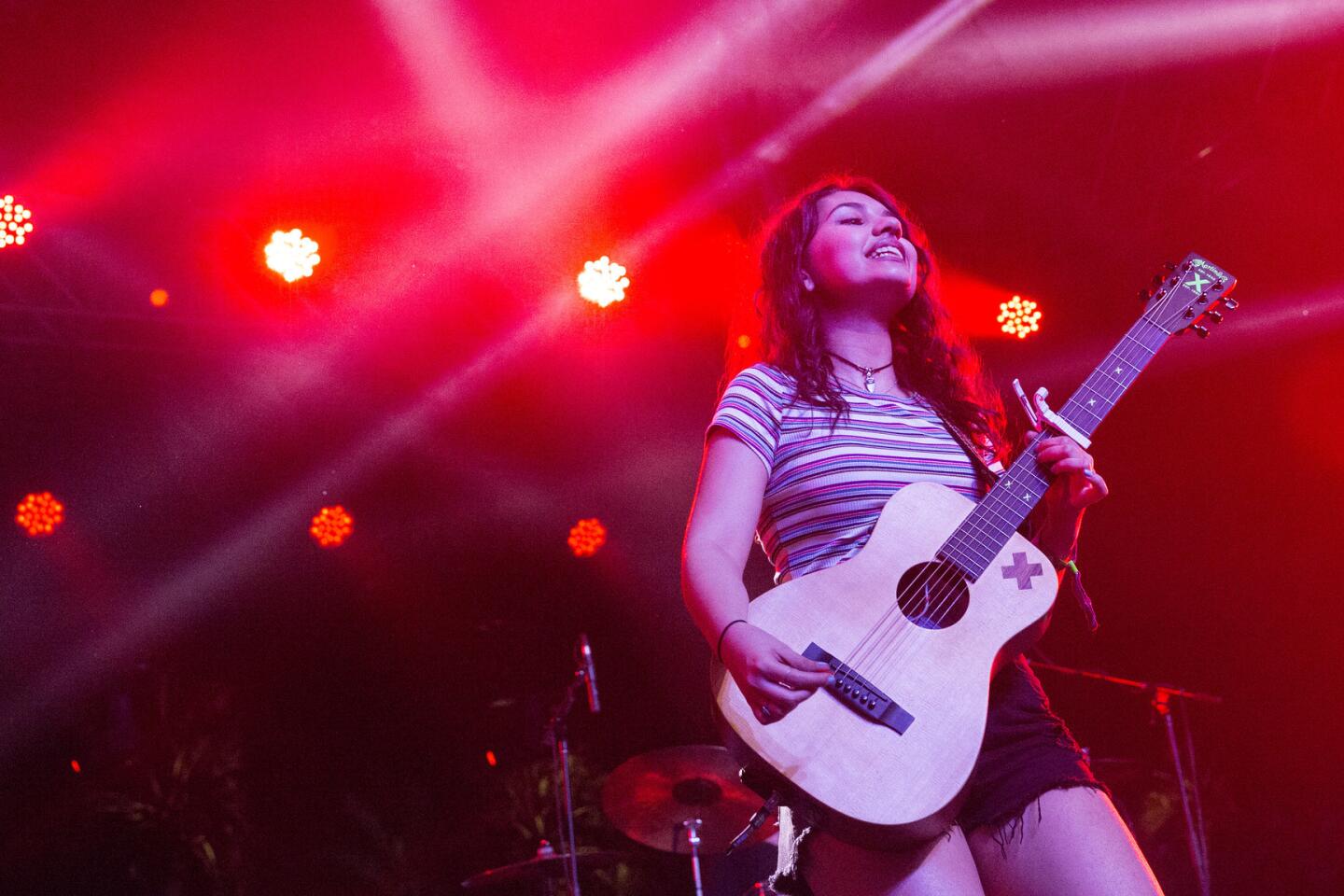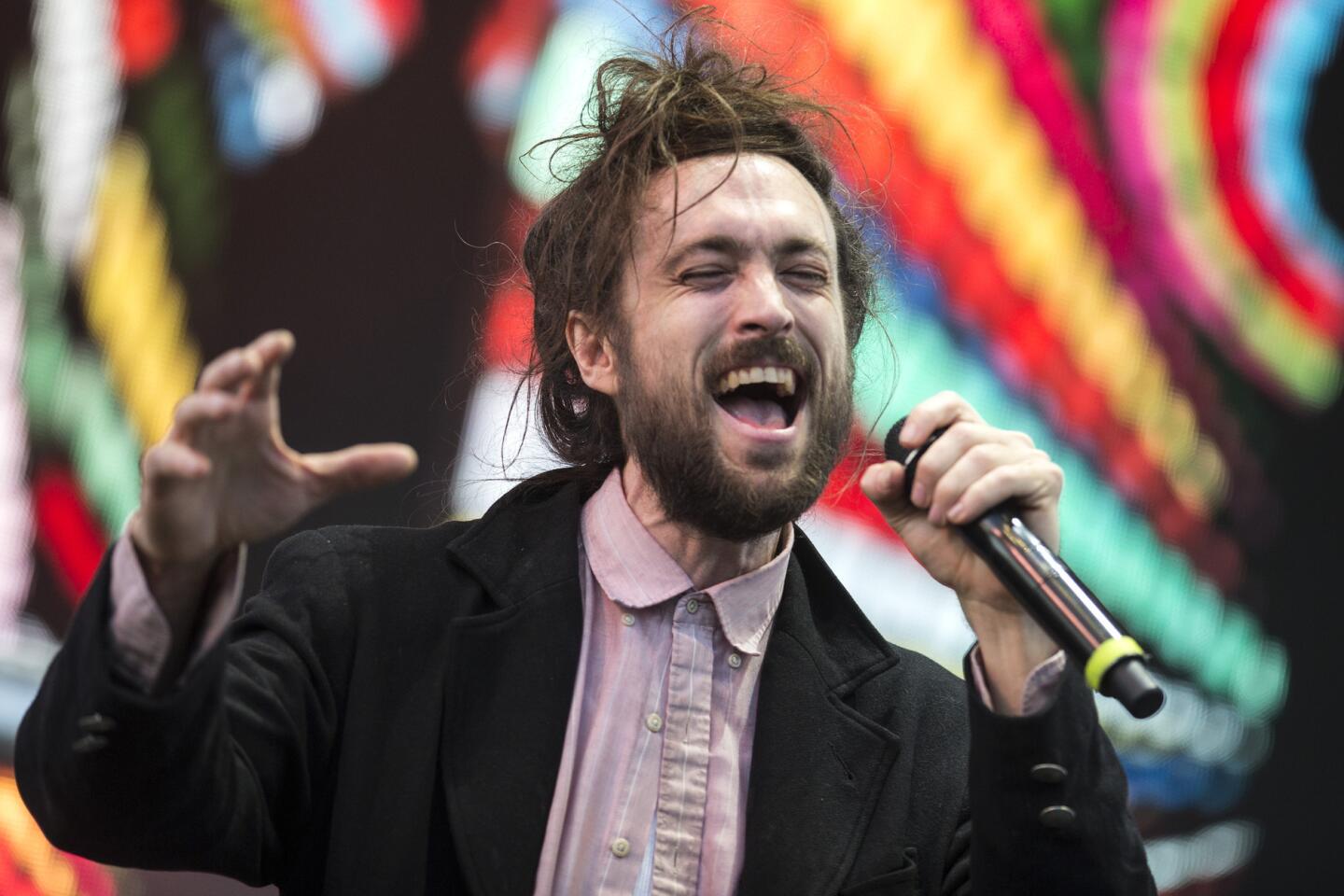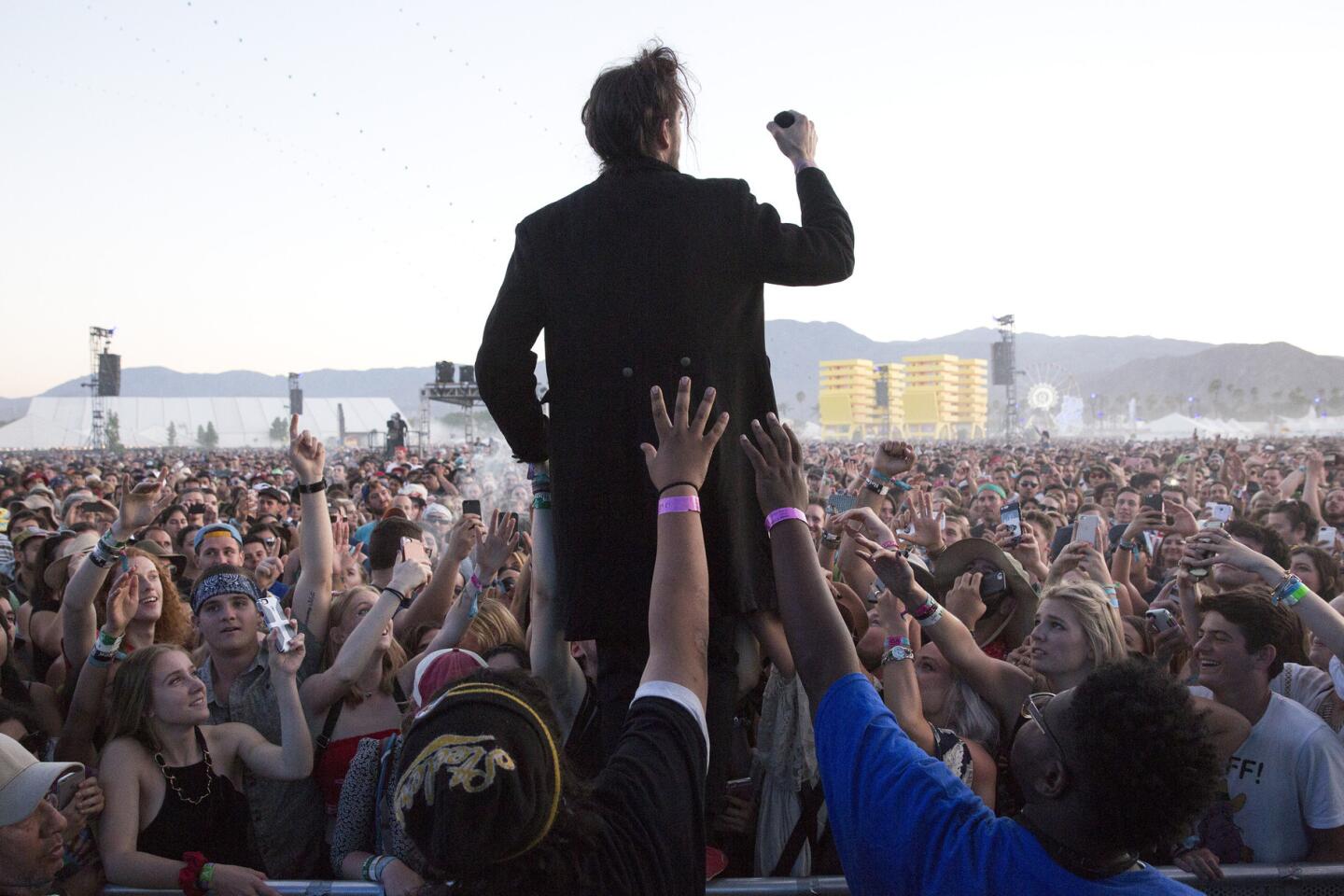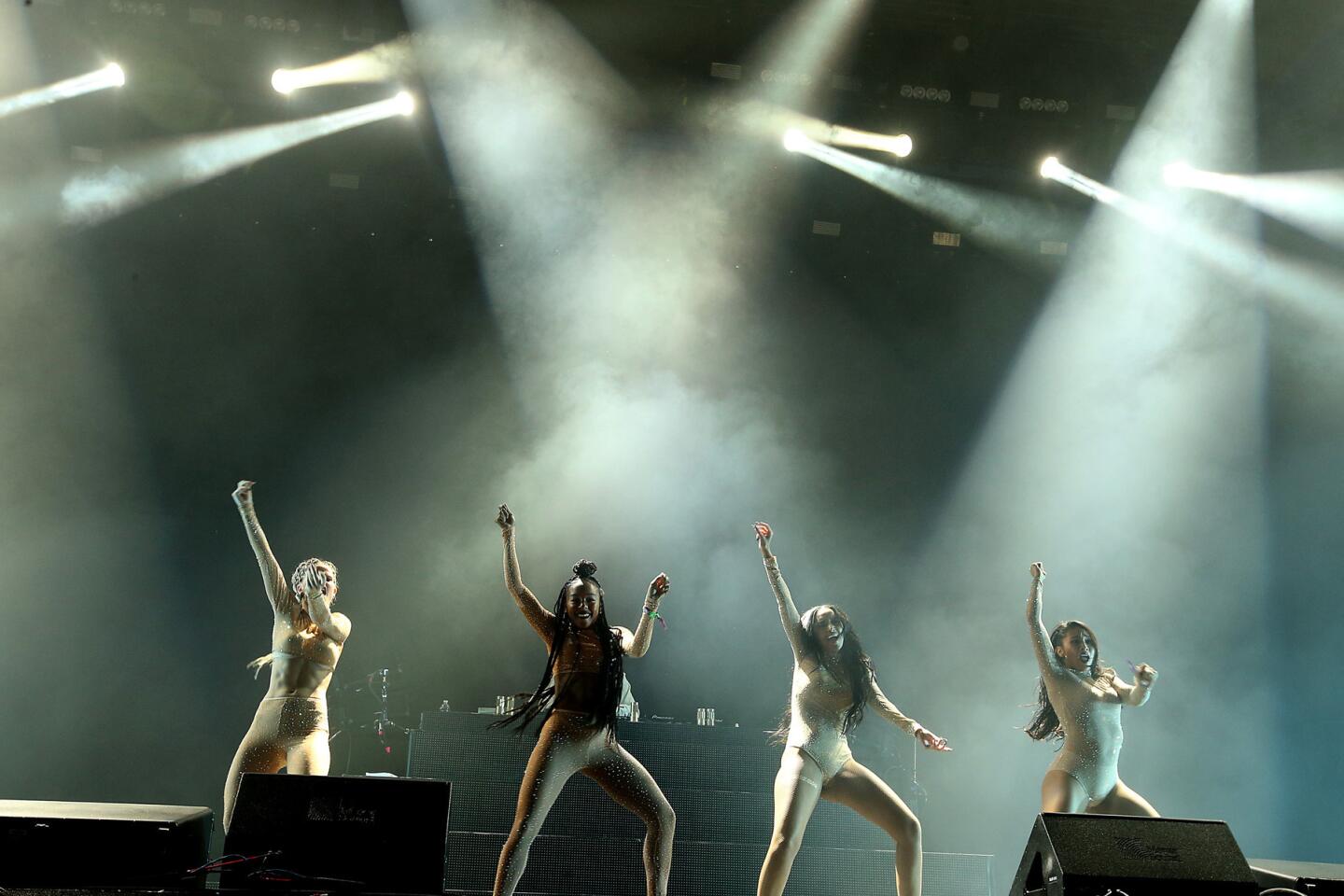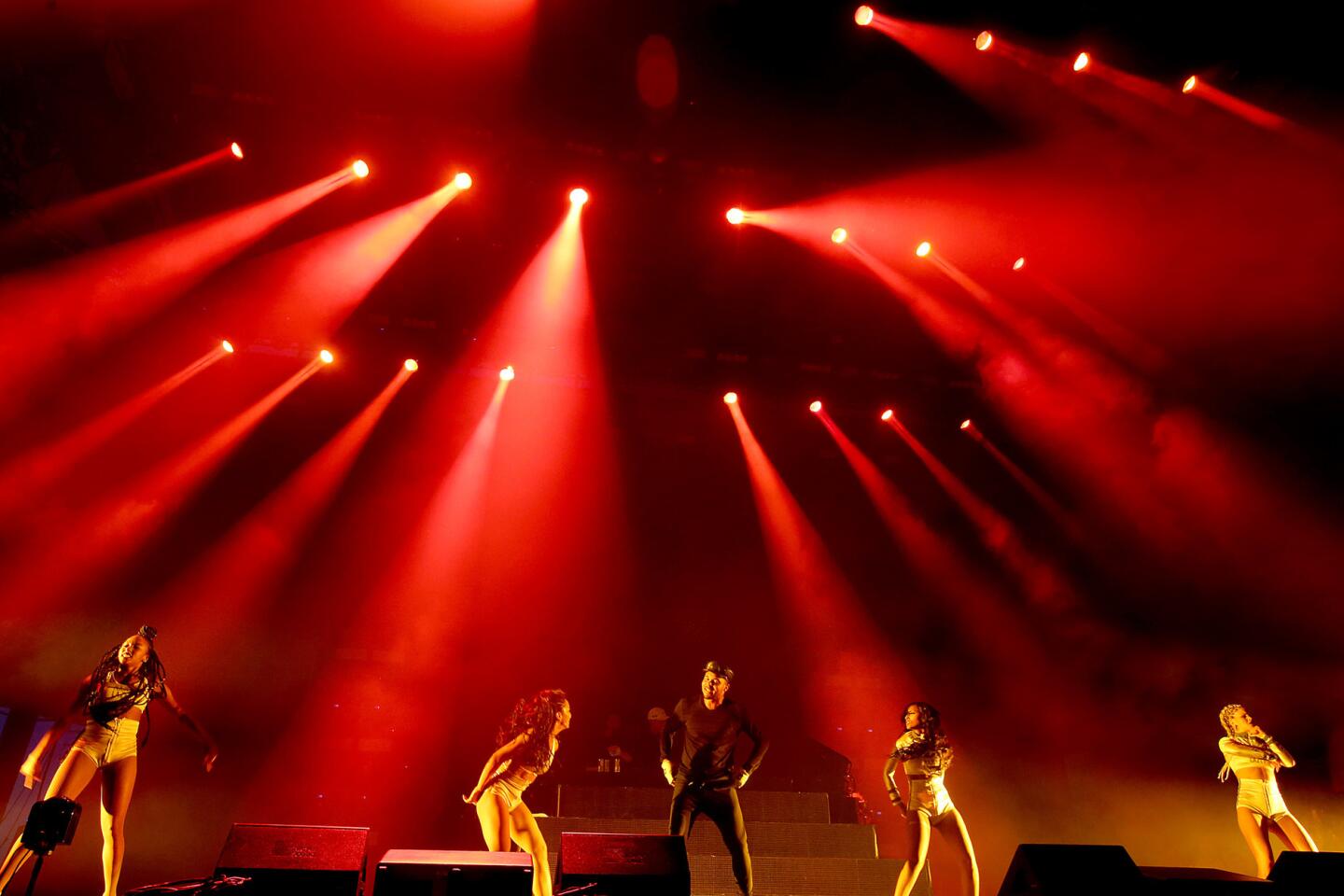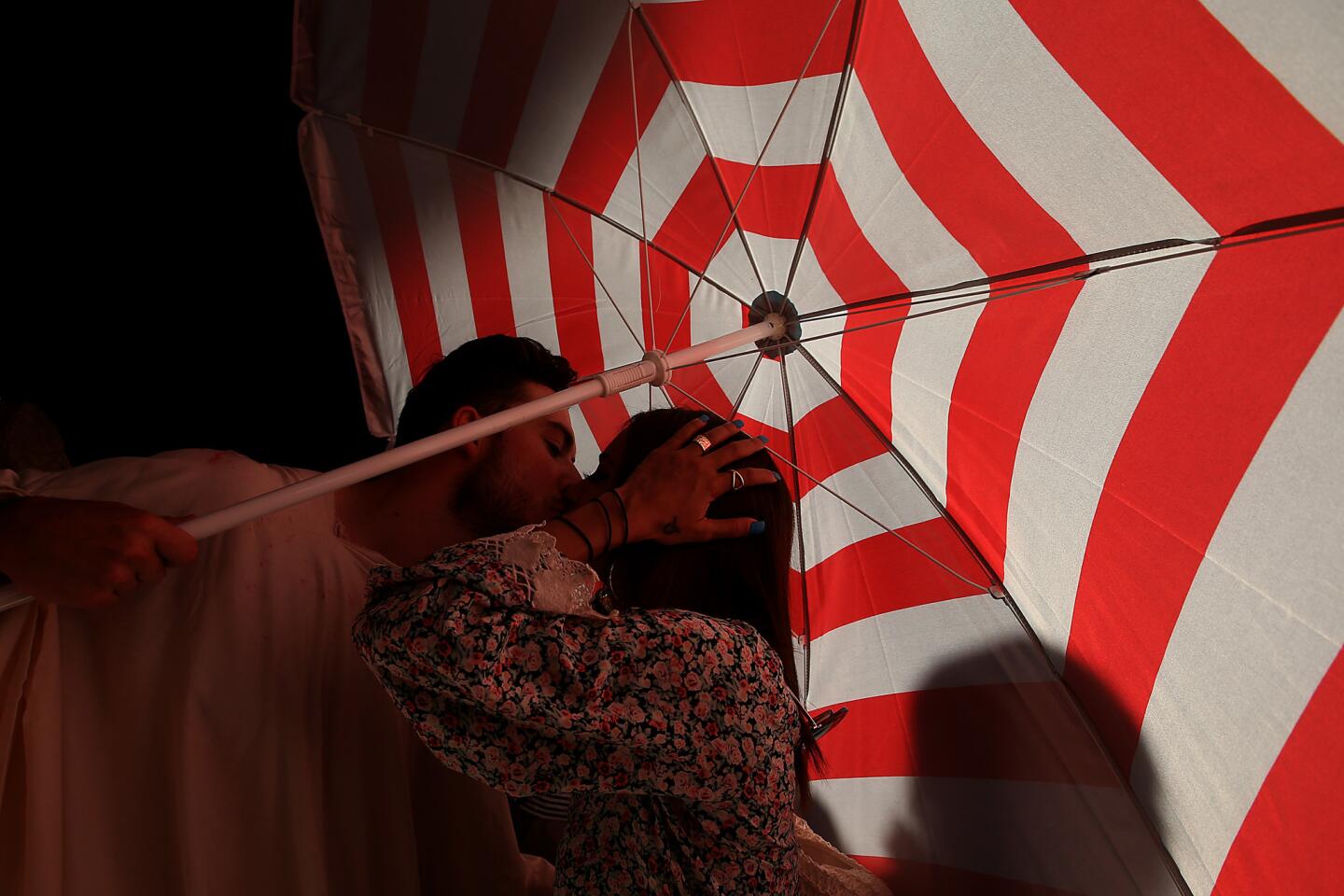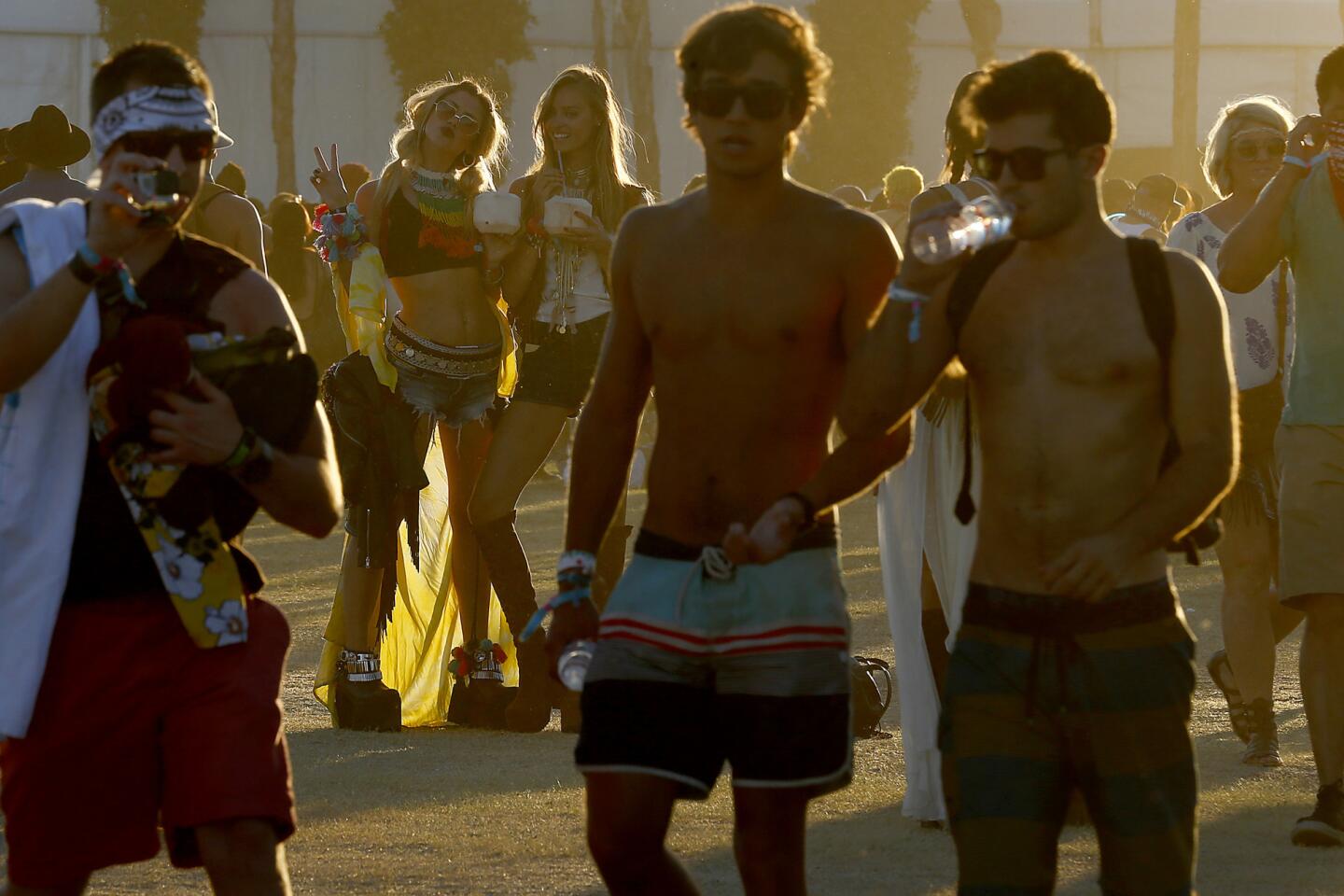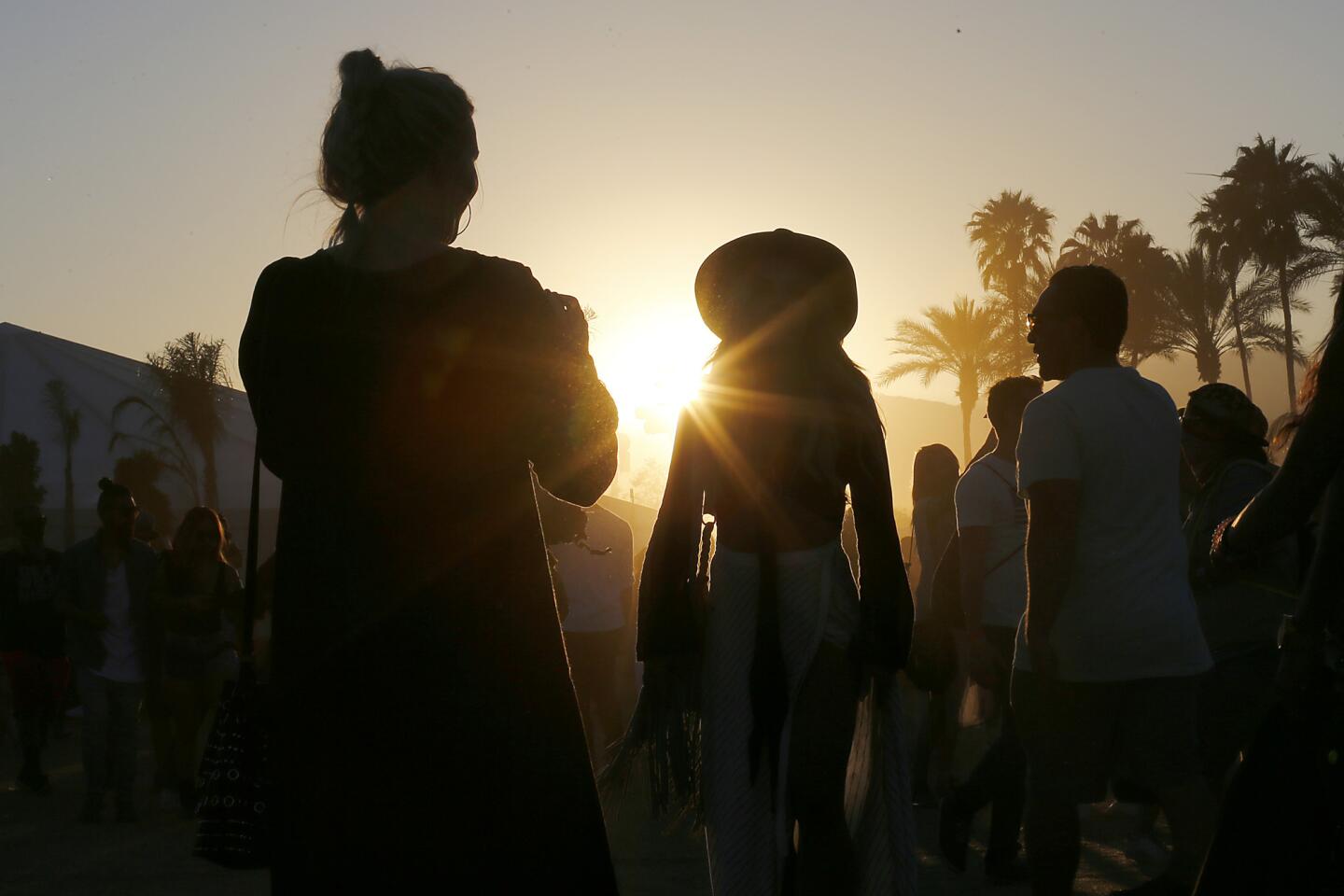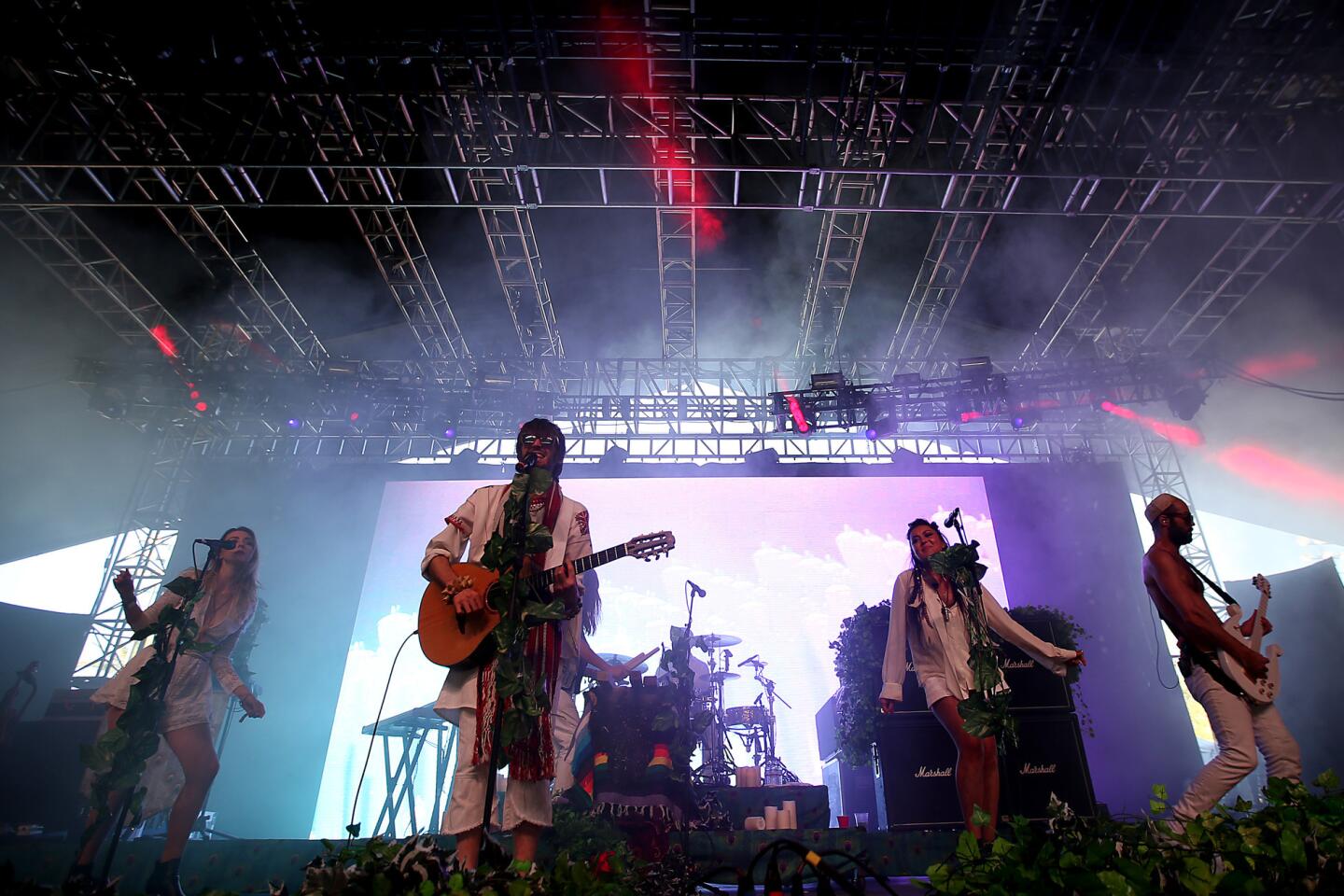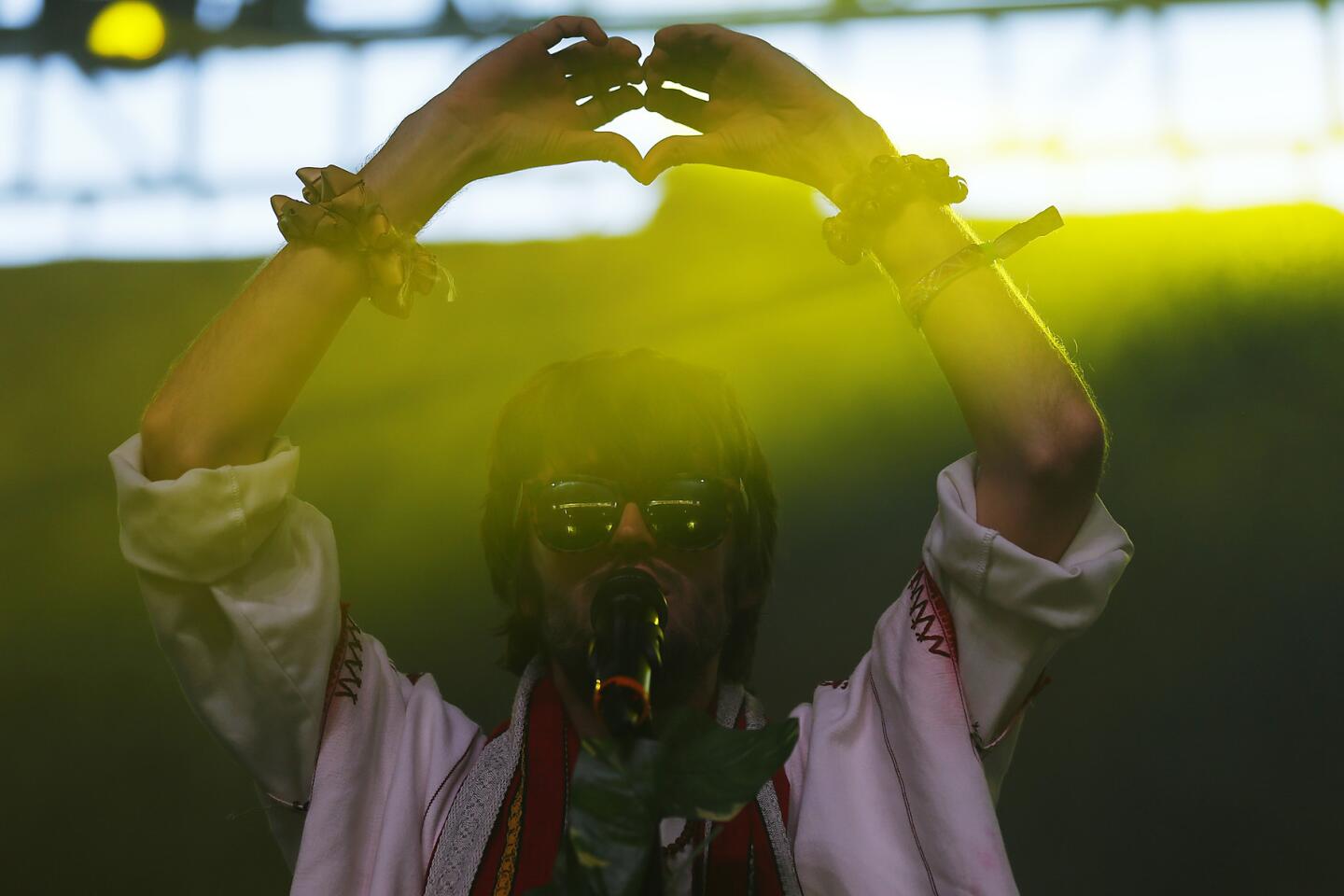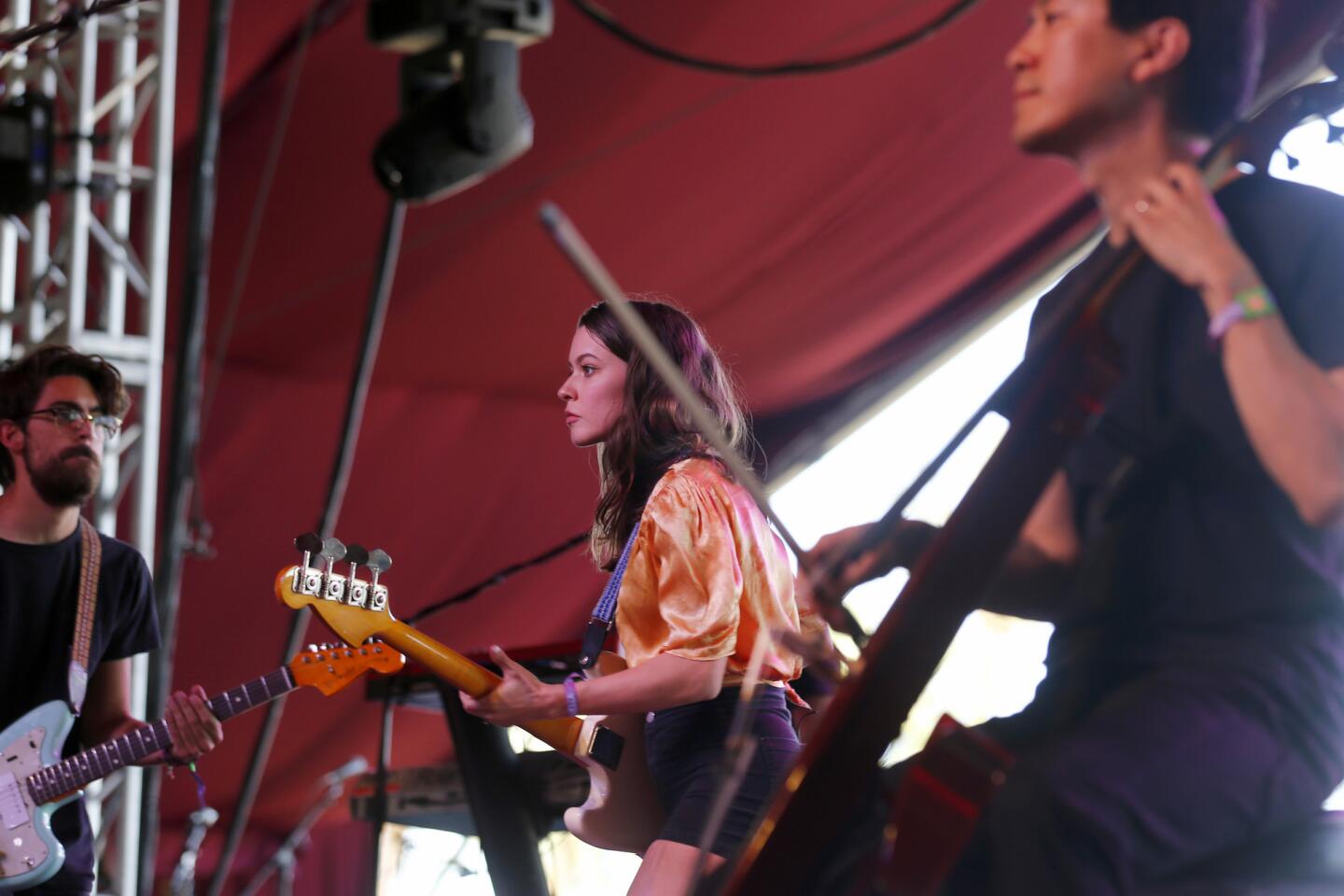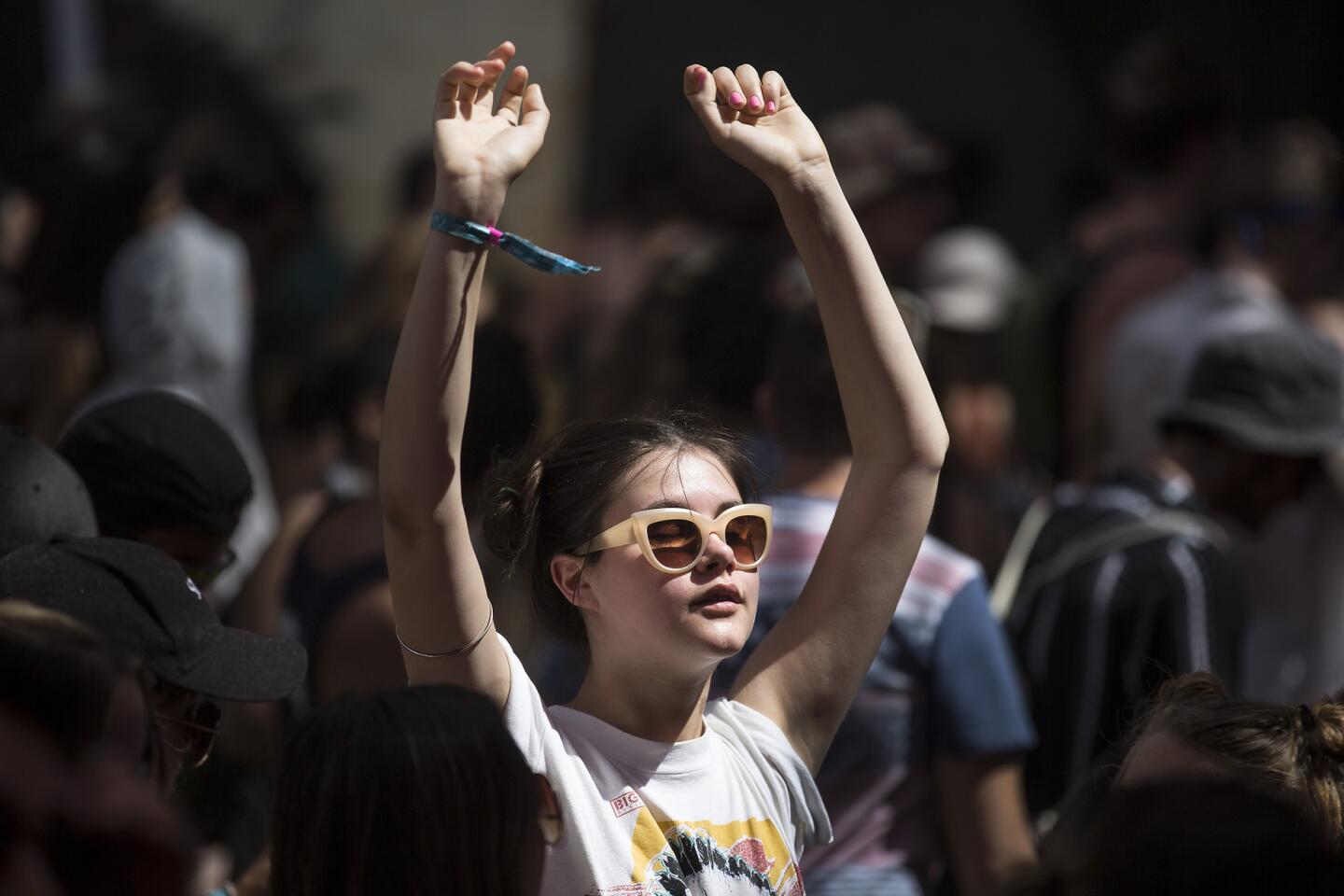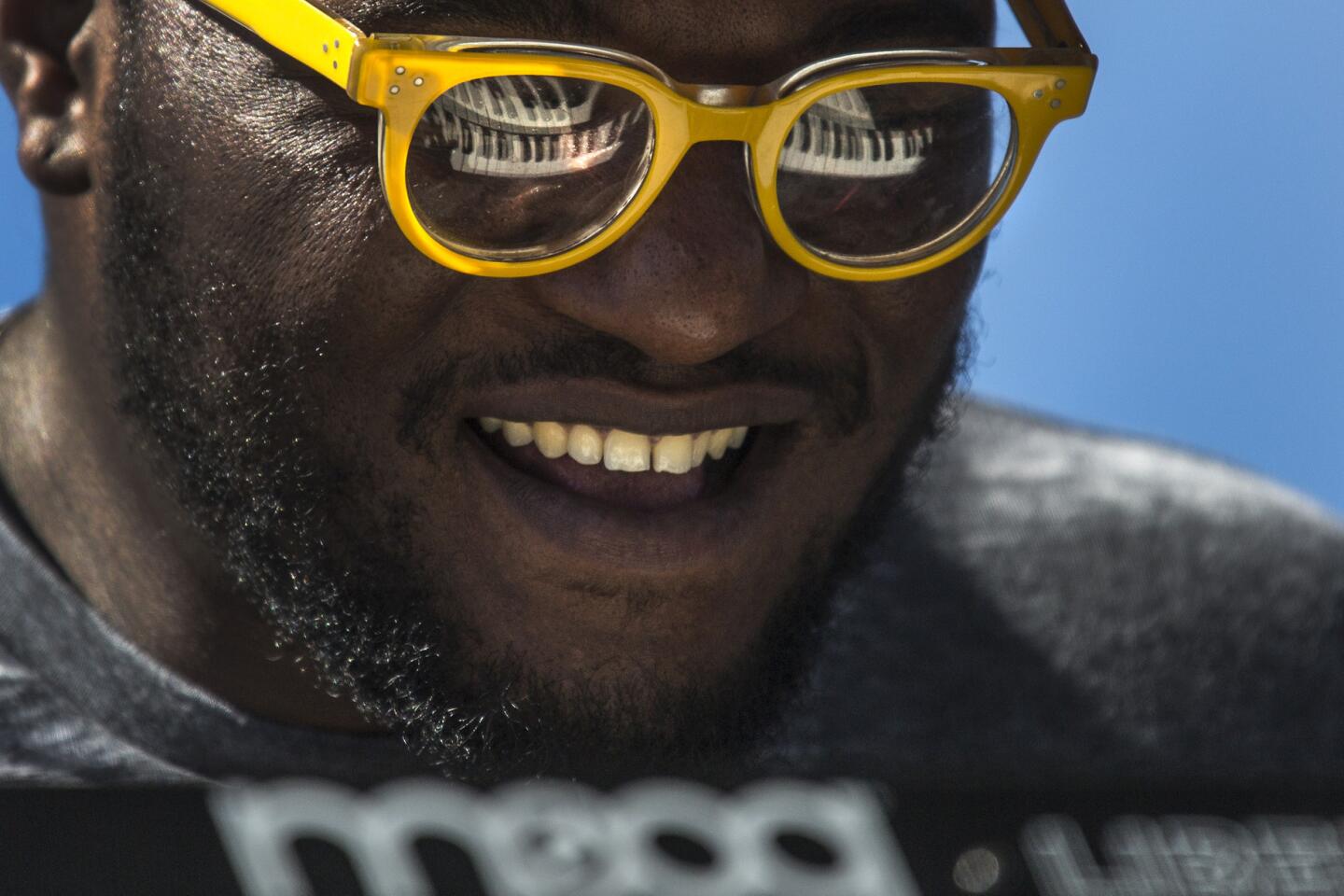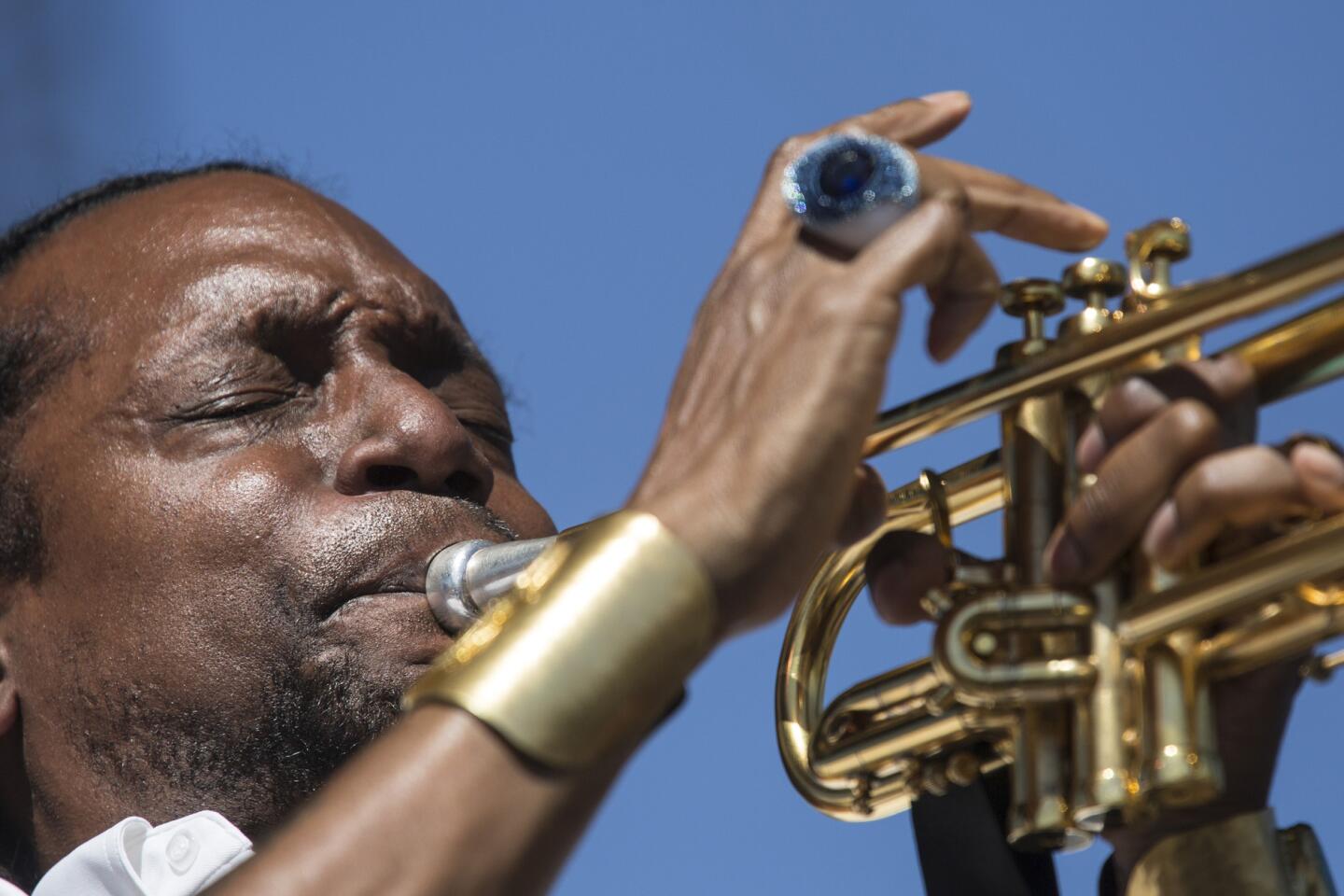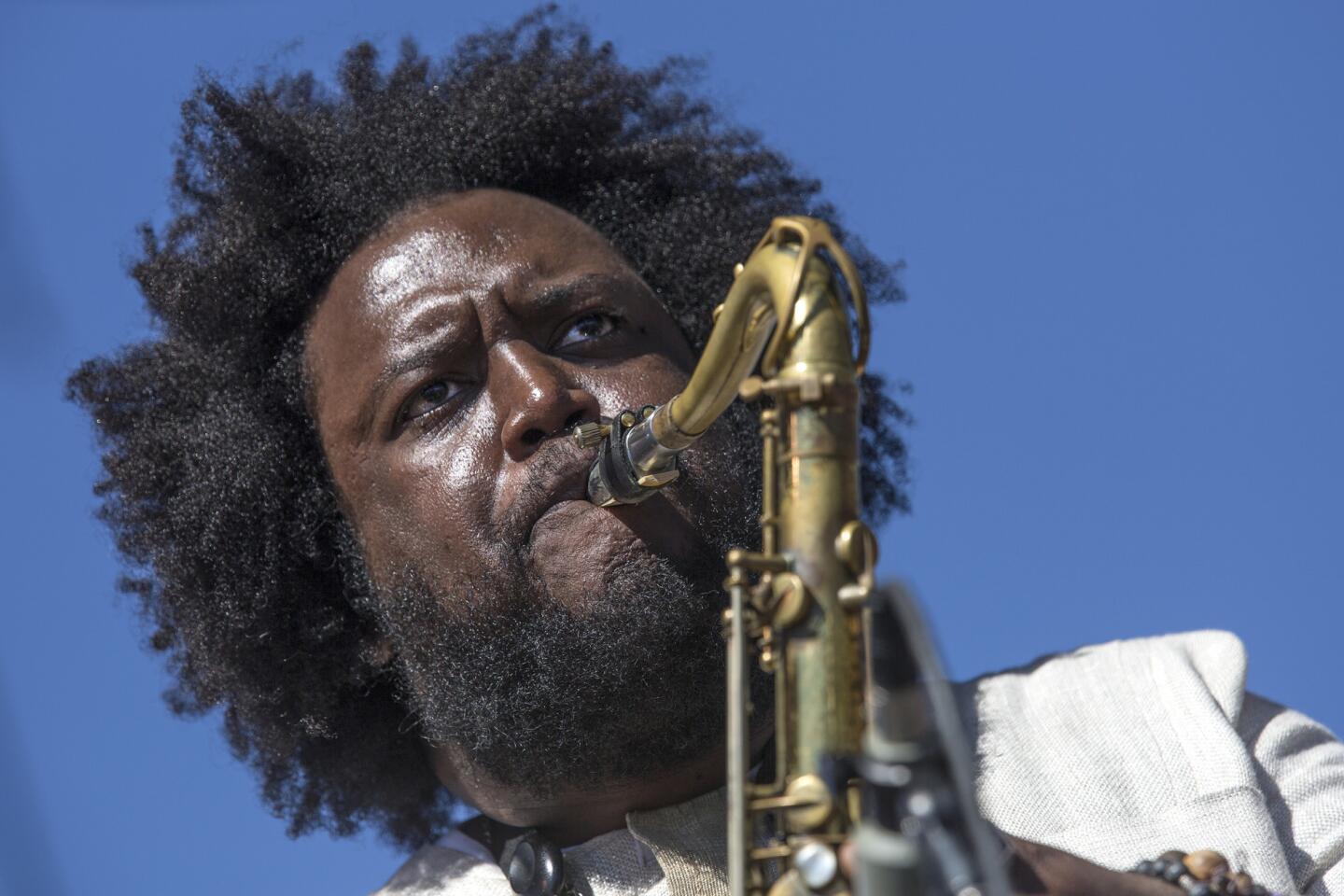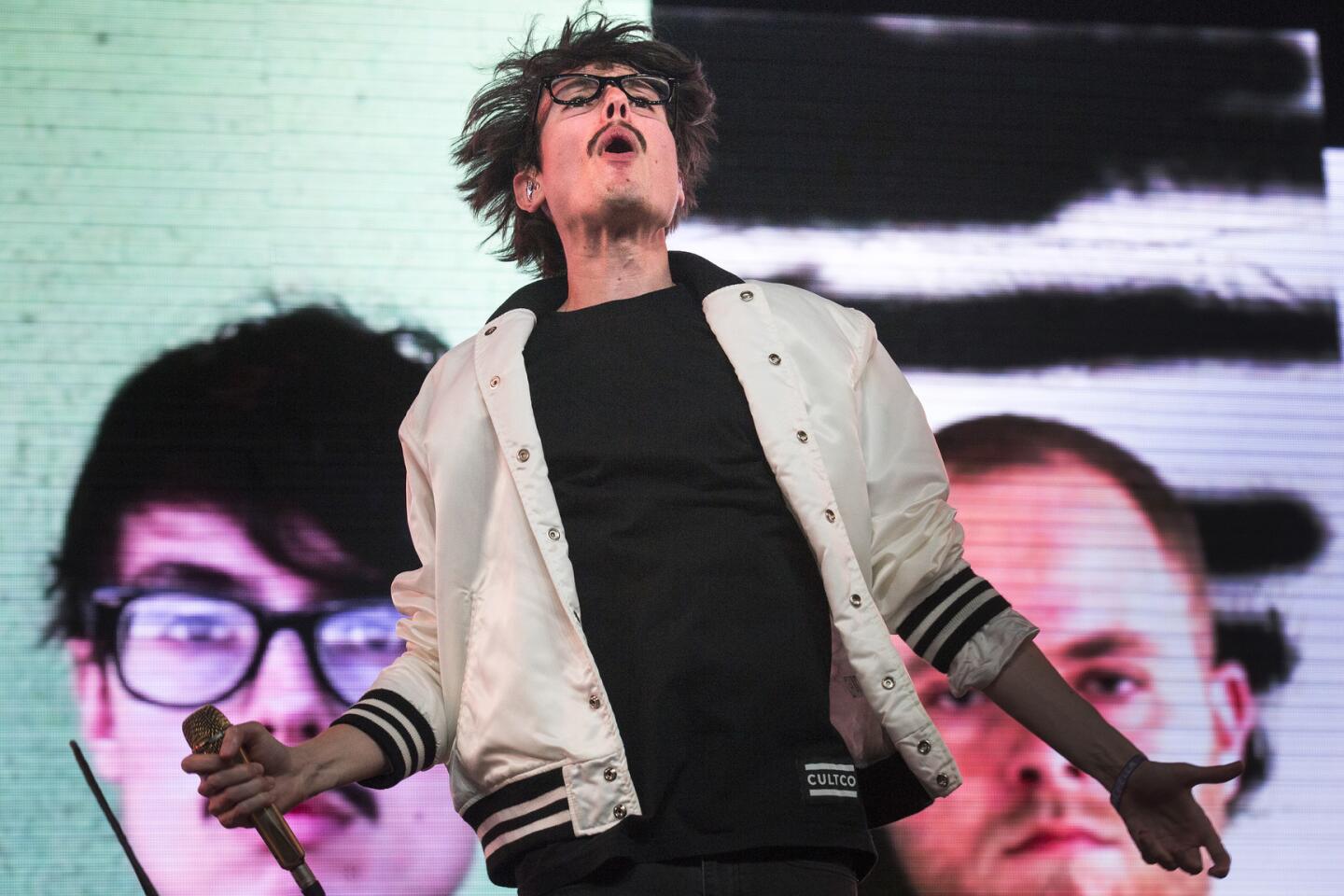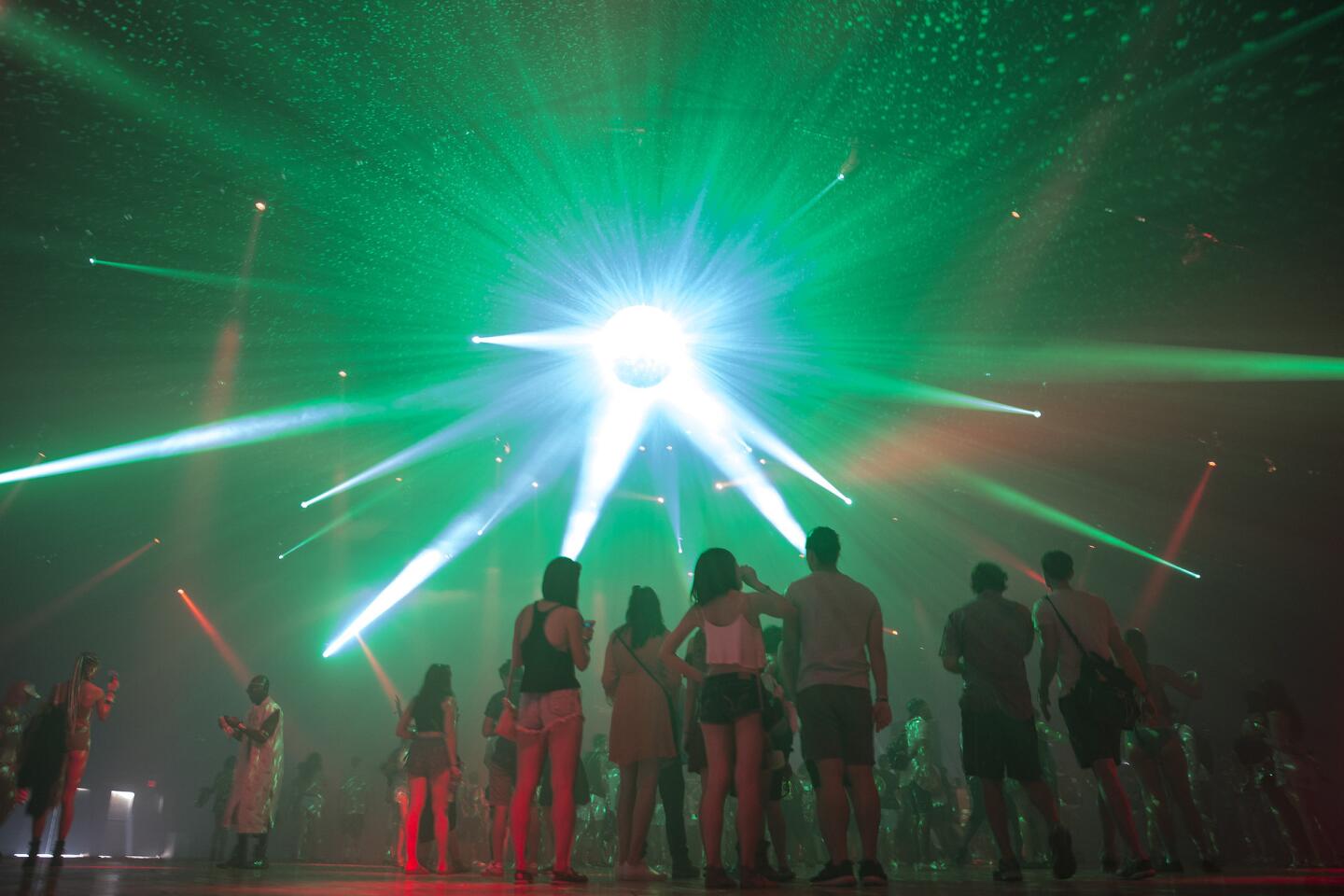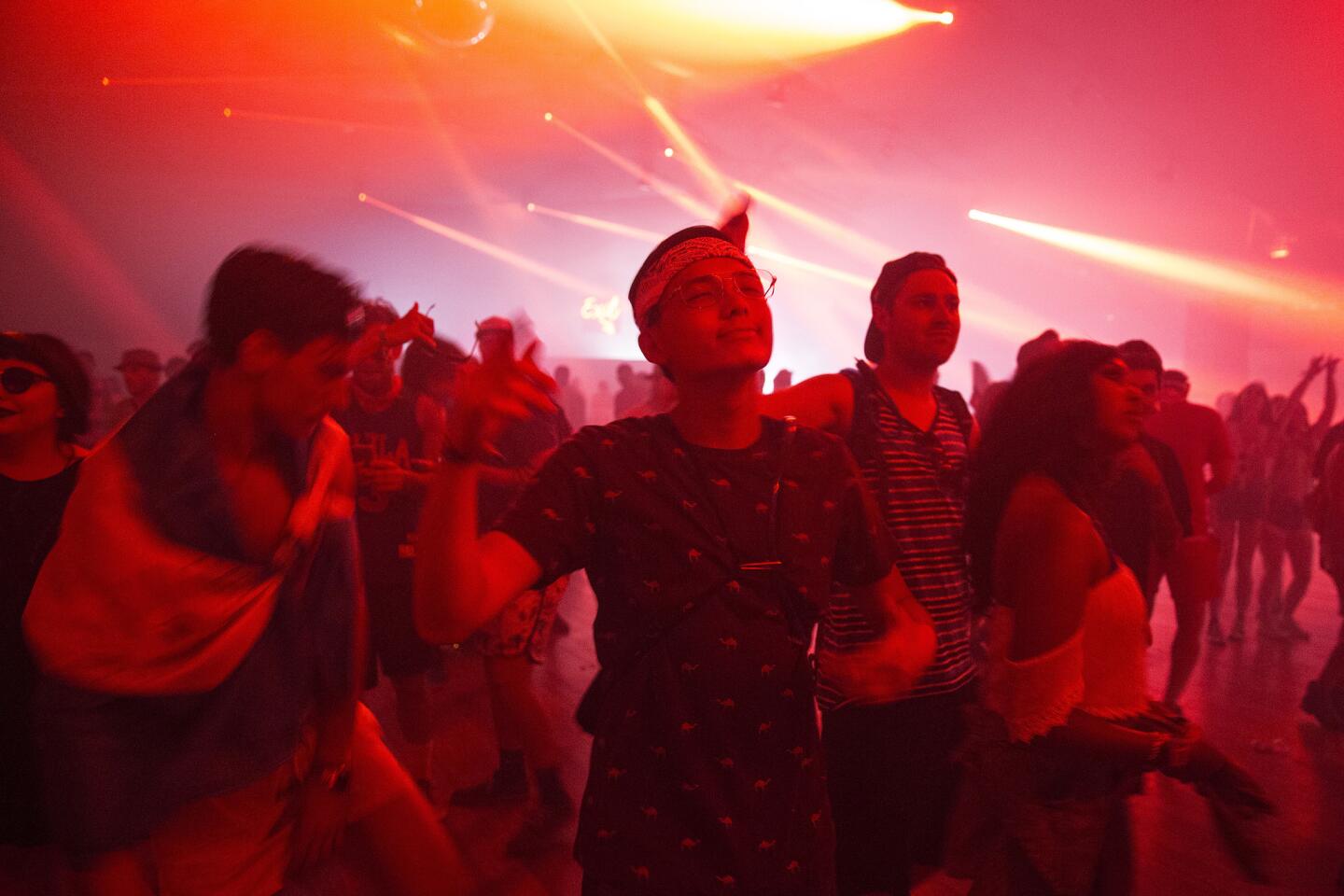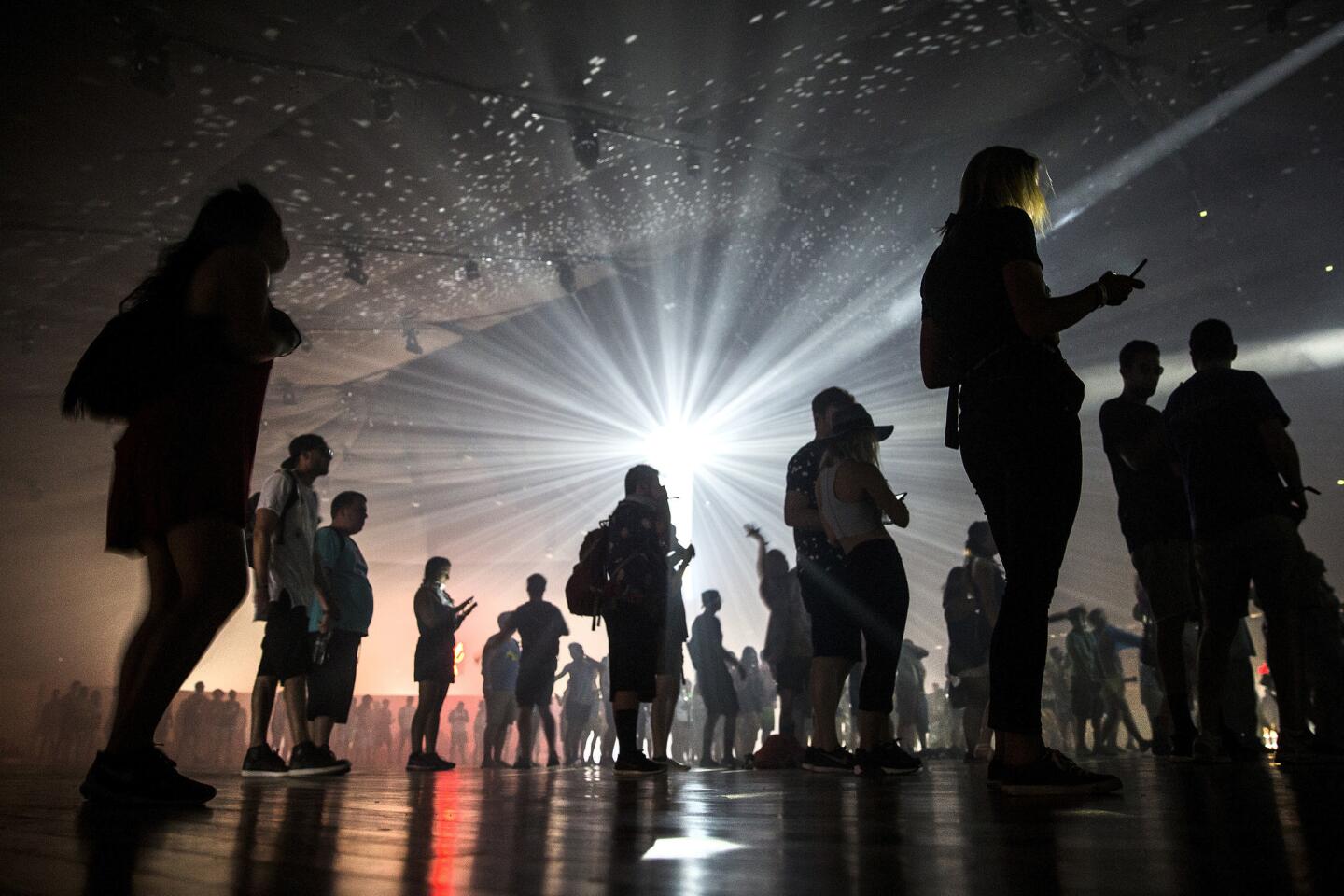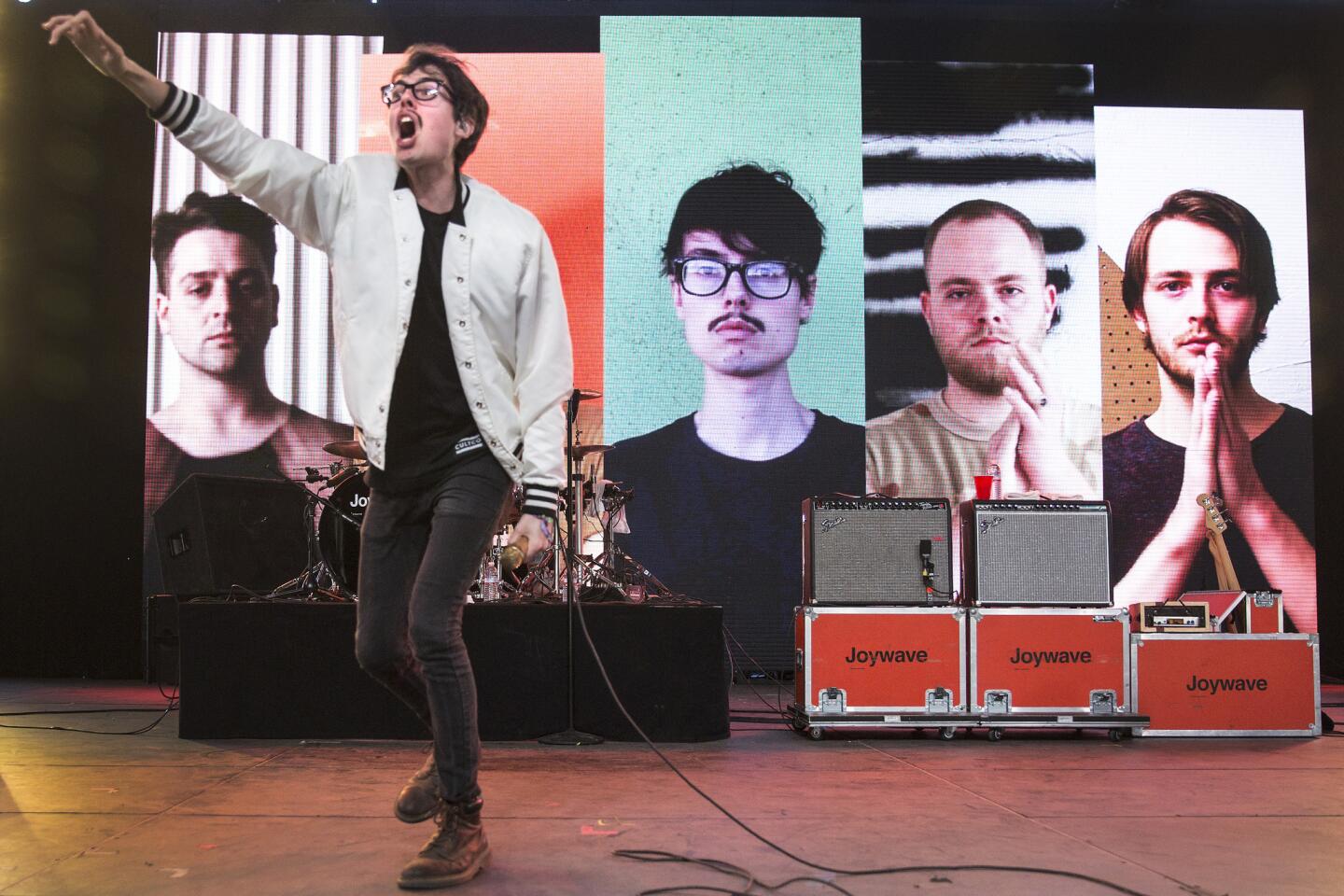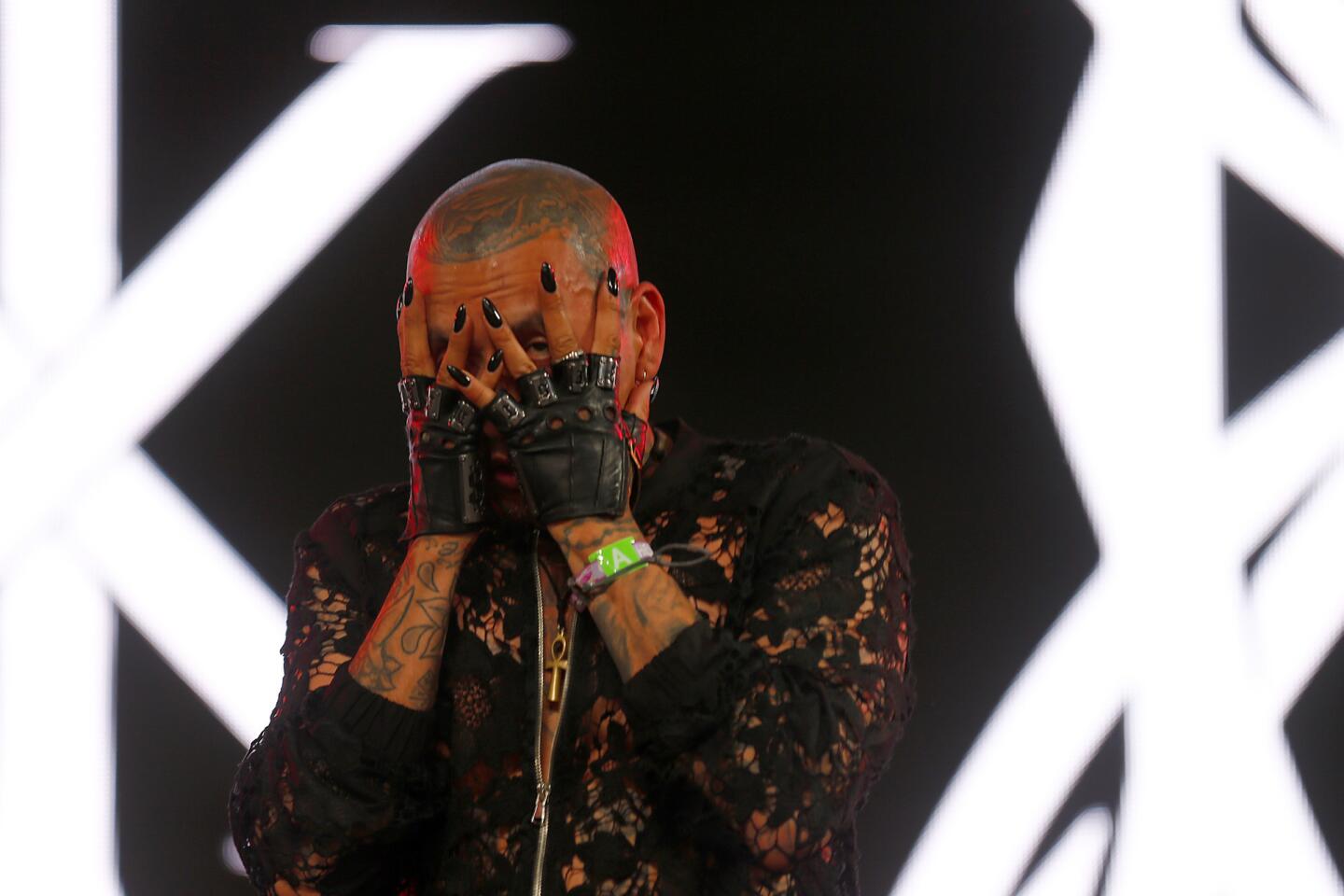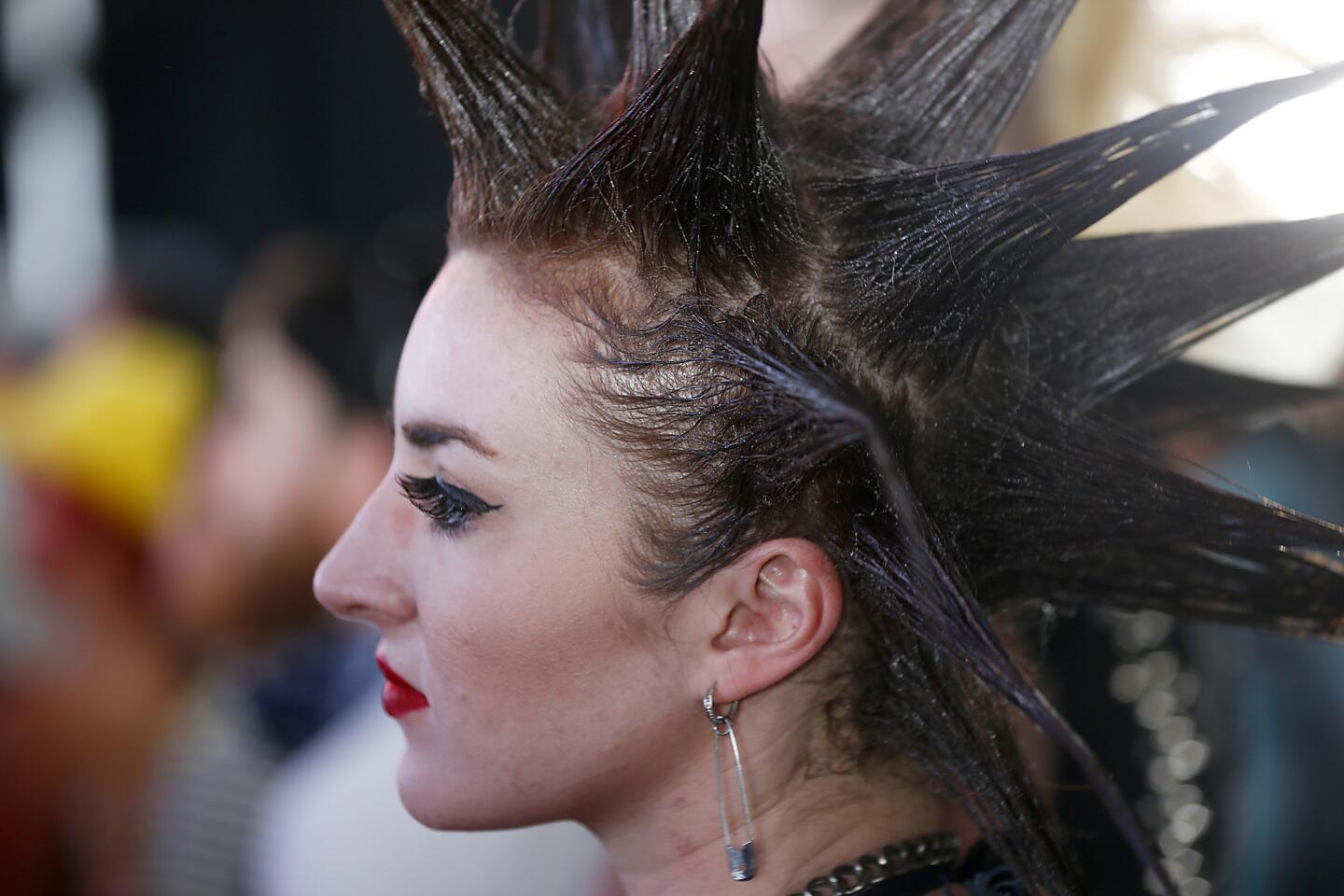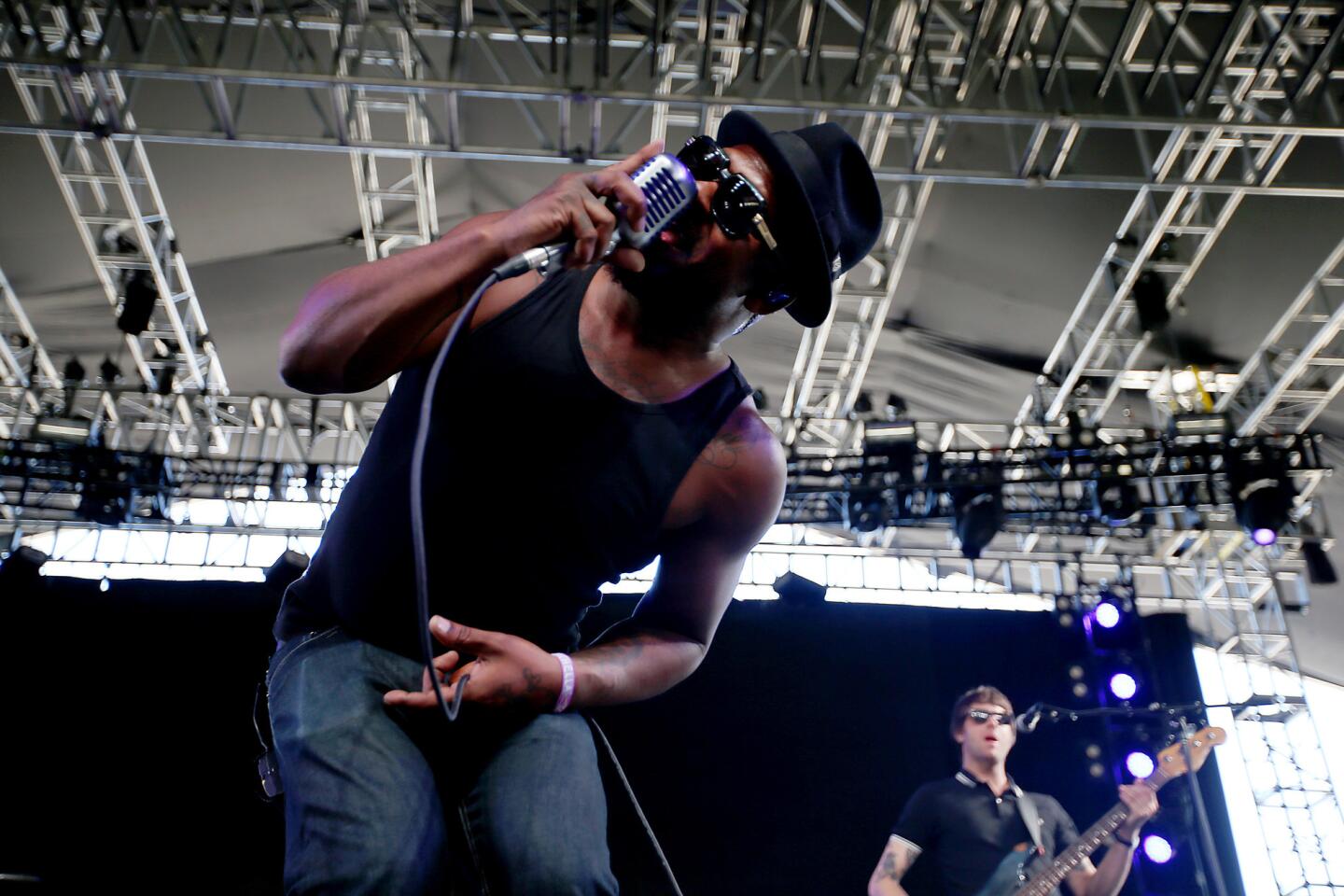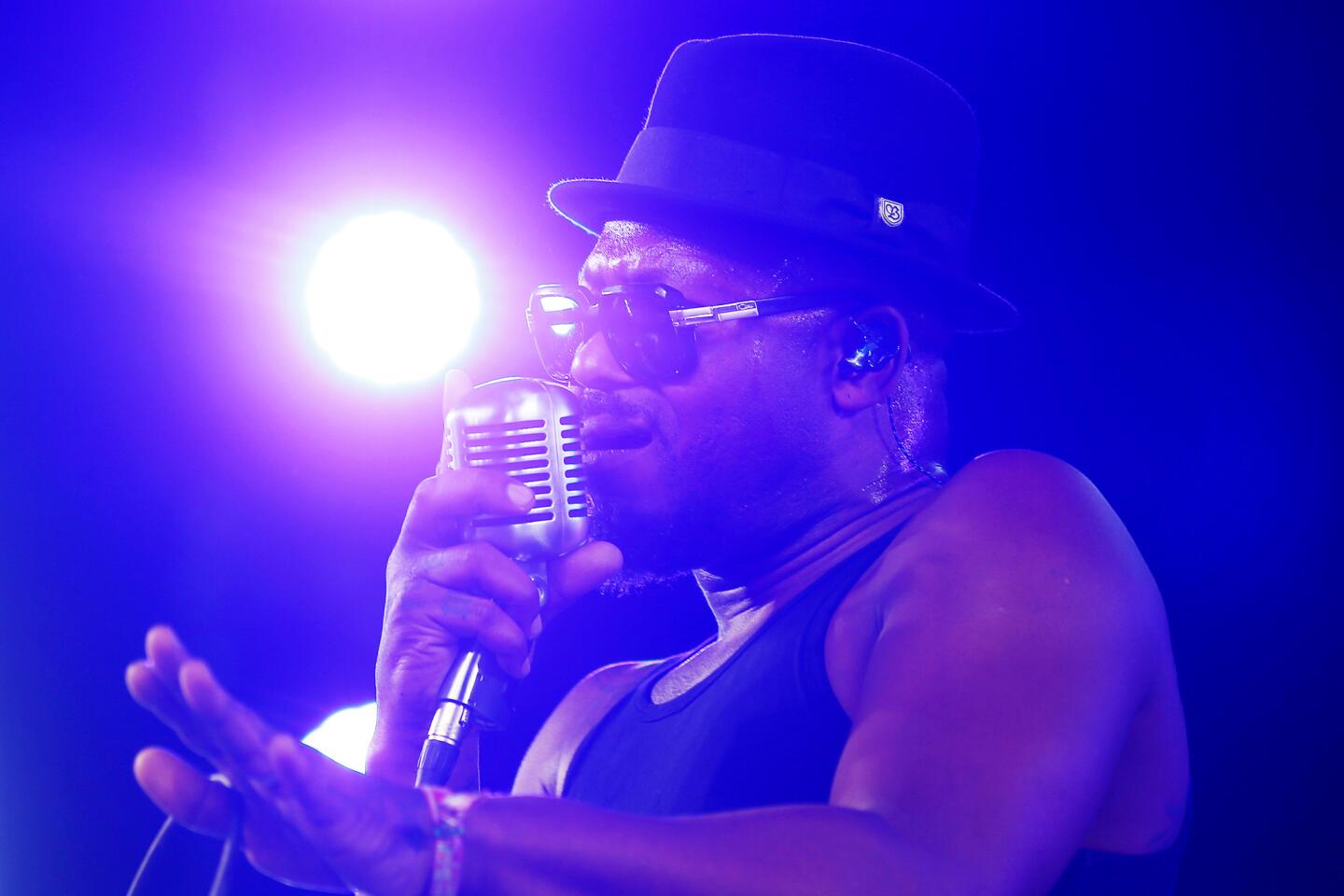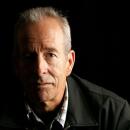How did old punk upstart Goldenvoice snare the rock icons it once rebelled against? Coachella
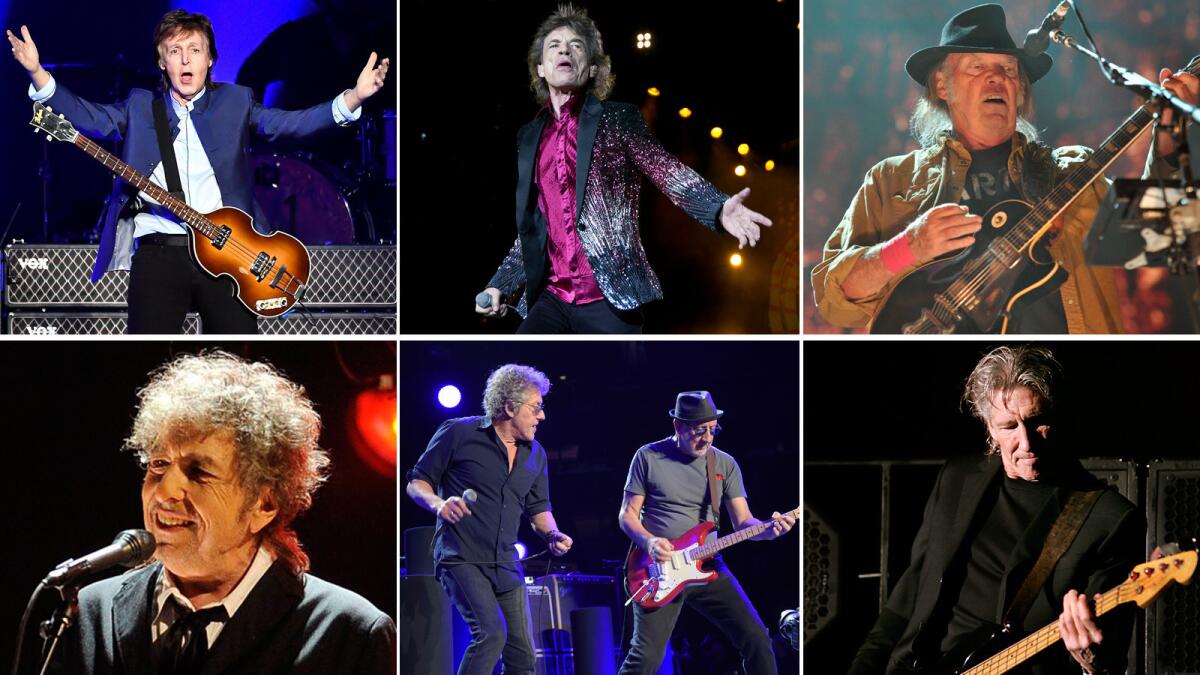
Top row, left to right: Paul McCartney, The Rolling Stones’ Mick Jagger and Neil Young. Bottom row, left to right: Bob Dylan; Roger Daltrey and Pete Townshend of The Who and former Pink Floyd frontman Roger Waters
- Share via
About three dozen years ago, concert promoter Goldenvoice began carving a niche for itself in the highly competitive Southern California live music scene by booking punk rock bands into low-rent theaters, warehouses, industrial parks and other off-the-grid venues in Los Angeles, Orange and Riverside counties.
Those days seem light-years away from the plan Goldenvoice has to bring together Bob Dylan, Paul McCartney, the Rolling Stones, the Who, Neil Young and Pink Floyd’s Roger Waters on a single stage in Indio over three nights in October.
How did a scrappy company that built its business with a strain of counterculture music other promoters rarely dared touch, and only the hardiest fans braved to experience live, come to be hosting six of the most important and beloved acts in the history of pop music?
One word goes a long way toward explaining Goldenvoice’s remarkable evolution: Coachella. Over the years, Goldenvoice’s flagship event, the Coachella Valley Music and Arts Festival, has turned into arguably the most prestigious such event in North America, and indisputably one of the biggest in the world.
All six acts targeted for the October show have had business dealings with Goldenvoice, and its corporate partner AEG Live, the presumption being that they have been sufficiently satisfied with those experiences to sign on to the ambitious plan to feature them all on one bill.
Coachella has become the best-attended and highest-grossing music festival in the world. Total attendance at the 2015 edition maxxed out at 99,000 per day over six days; the same figure is expected to play out as the 2016 edition moves toward its second weekend on Friday through Sunday.
Coachella’s 2015 six-day gross of more than $84.3 million dwarfed the competition worldwide, according to Pollstar, the concert industry-tracking publication. The second highest-grossing festival of 2015 globally was Outside Lands, which pulled in $24.3 million over its three-day run in San Francisco’s Golden Gate Park — less than a third of what Coachella made.
Stagecoach, Coachella’s country music cousin that also is produced by Goldenvoice and AEG Live, finished third among festivals with a three-day gross of $21.9 million last year. It draws the biggest crowds of any country music festival worldwide, with total attendance topping out at 70,000 at each of its three days of music.
Everything didn’t start so rosy. The first Coachella in 1999 nearly bankrupted Goldenvoice and prompted the promoter to put the event on hold in 2000. Goldenvoice regrouped in 2001 and entered a partnership with AEG Live several years later that steadily built Coachella into a juggernaut that triggered a snowballing of music festivals across the country.
In its wake came Bonnaroo, Outside Lands, the Electric Daisy Carnival, Tortuga and scores of others.
Perry Farrell of rock group Jane’s Addiction had launched Lollapalooza as a touring festival in 1991 but discontinued it six years later. The tour was revived briefly in 2003 and 2004; the following year, Lollapalooza became a single-location event, a la Coachella, held annually in Chicago. Subsequently it has branched out with editions in South America and Europe.
The Newport Jazz and Folk festivals in Rhode Island have sustained high-profile status since the 1950s, just as the New Orleans Jazz & Heritage Festival has been an annual tradition since 1970.
But other pop music gatherings in the U.S. historically have been singular events, and generally few and far between, such as the Monterey Pop Festival in the Northern California in 1967, the Woodstock Music & Art Fair in upstate New York in 1969, California Jam in Ontario in 1974 and the US Festival in San Bernardino in 1983.
Before Coachella, annual music festivals had been far more common in England and elsewhere in Europe than in the U.S.
Goldenvoice and AEG Live also now operate or hold major stakes in other festivals around the country, including the Firefly Music Festival in Dover, Del., the new Panorama on Randall’s Island Park in New York, the FYF Fest in Los Angeles and last year’s inaugural Big Barrel Country Music Festival, also in Dover.
The October concert, which has yet to be named, will be Goldenvoice’s third major event at the Empire Polo Field outside of the annual Coachella and Stagecoach events. Coachella proved to be so popular that in 2012, Goldenvoice cloned it into two three-day weekends with identical lineups.
A source with knowledge of the event, who was not authorized to speak on the record because all details had yet to be finalized, said the plan was for the six acts to perform two per night, delivering full sets with their full concert productions, rather than abbreviated performances that typify festivals. It is not envisioned as a prototype for an annual classic-rock gathering, but as a one-off weekend.
“It sounds like an extraordinary, historic event,” veteran classic-rock deejay Jim Ladd told The Times this week.
The participants also won’t be competing for concertgoers’ attention with 30 or 40 other bands that characteristically fill the lineups at daylong festival marathons. All performances would begin after sundown.
The proposed schedule has Dylan opening the event on Oct. 7, to be followed by the Rolling Stones. Neil Young & the Promise of the Real, the young band that’s been touring with him since 2014, would play on Oct. 8, followed by McCartney and his long-running touring band. The festival would conclude on Oct. 9 with sets by the Who, followed by Waters.
A key aim of the October concert is to focus on acts that still tour and/or record regularly, rather than to broker reunions, such as an appearance by Led Zeppelin, as many fans have inquired about since word of the concert surfaced last week, the source said.
After entering a long-term arrangement in 2013 to stage Coachella and Stagecoach at the Empire Polo Field through 2030, Goldenvoice officials were granted the right to have up to five events per year at the site. The twin Coachella weekends and Stagecoach account for three of those slots annually.
Jam band Phish played a weekend in Indio in October 2009 as part of the group’s Festival 8 tour.
In 2011, Goldenvoice gathered four of the biggest heavy metal bands in the world to top a Big Four hard-rock bill sandwiched between Coachella and Stagecoach.
Metallica, Slayer, Megadeth and Anthrax wooed fans of head-banger music to Indio for the single-day event, scheduled in part that year because Easter Sunday fell on the weekend immediately after Coachella. That normally would have been taken by Stagecoach, but Goldenvoice opted not to stage a full weekend festival in the region on that holiday.
Additionally, the firm experimented in 2012 with a pair of cruises dubbed S.S. Coachella, one to the Bahamas, the other to Jamaica. Some 2,800 fans cruised the Caribbean for three days highlighted by performances from Pulp, Hot Chip, Sleigh Bells, Girl Talk and other Coachella-worthy acts. The overhead cost of the cruise ship, however, made the venture unprofitable and talk of annual cruises was shelved.
Twitter: @RandyLewis2
MORE:
Coachella promoters look to book Dylan, Stones, McCartney and Young for mega-concert
Brian Johnson of AC/DC details hearing loss that led to exit from tour
In an orchestra’s meet-and-mash of Kanye West and Beethoven, classical kicks it with a hip-hop beat
More to Read
The biggest entertainment stories
Get our big stories about Hollywood, film, television, music, arts, culture and more right in your inbox as soon as they publish.
You may occasionally receive promotional content from the Los Angeles Times.
